Jollibee
anticipate seeing not only a multitude of excited Jollibee patrons waiting to get their hands on their Jollibee favorites, but also first-timers waiting to have their own Jollibee experience," said Jose Miñana,
Group
volume 12 | issue 3 | spring 2023





President for North America. "There's no greater joy for us than serving the needs and tastes of Jollibee fans in the community. At Jollibee, we aim to bring families together for happy moments over great tasting food with superior value, served with warm and friendly service –our own brand of joy." The brand has become a symbol of nostalgia and warm childhood memories for many overseas Filipinos in the U.S. To many, Jollibee is the go-to restaurant of Filipinos for both special
Foods Corporation's










With the opening, Floridians will get to try Jollibee's signature menu items such as the world famous Chickenjoy. This dish is delicately breaded to be crispylicious on the outside and juicylicious inside. The well-loved Jolly Spaghetti is a favorite of both kids and kids-at-heart because of its signature sweetstyle sauce, loaded with chunky slices of savory ham, ground meat, and hotdog. Other classic menufavorites include the juicy and cheesy Jolly Hotdog, and the Peach Mango Pie, which is made with real Philippine sweet mangoes and a flaky golden brown crust.
and excitement, Jollibee, the largest Asian restaurant company, is now open in Jacksonville. This is the 36th store in the US, as well as

HARVEST THE ENDORSED PUBLICATION OF THE FLORIDA BLUEBERRY GROWERS ASSOCIATION www.FloridaBlueberryGrowers.org
SEASON Management Strategies For Spring,
DEFEATING DISEASE Identifying & Managing Phytophthora Root Rot NOW ON THE APP New Pesticide Module Packed With Info PRUNING WITH A PURPOSE Maintain Vigor, Balance Growth, And Reduce Pests and Diseases CHILLI THRIPS Tips to Help You Plan Your Attack PRSRT STD US POSTAGE PAID WEST PALM BEACH,FL PERMIT NO. 4595 ipation
Early Summer
See JOLLIBEE
edition
page 15
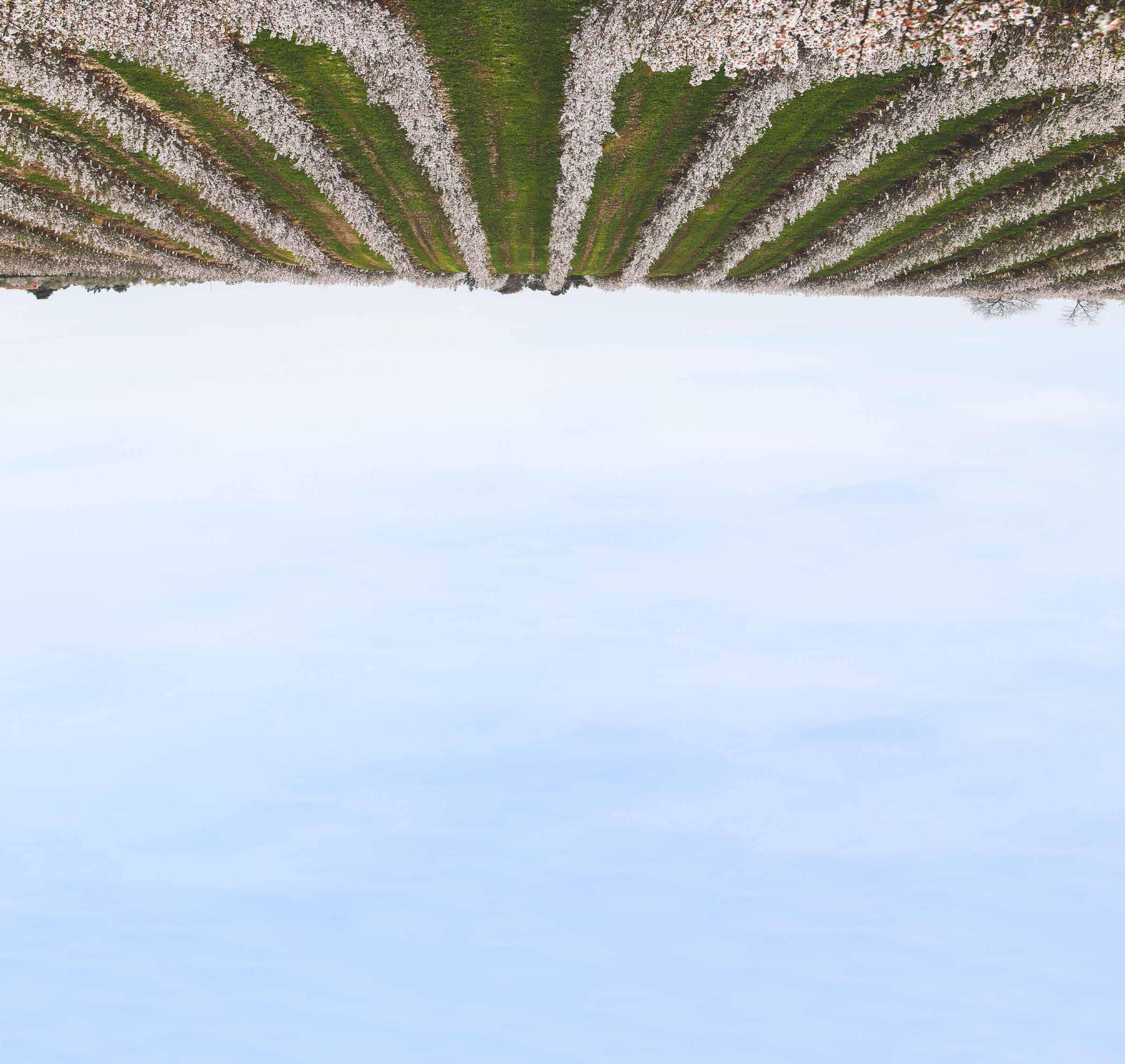

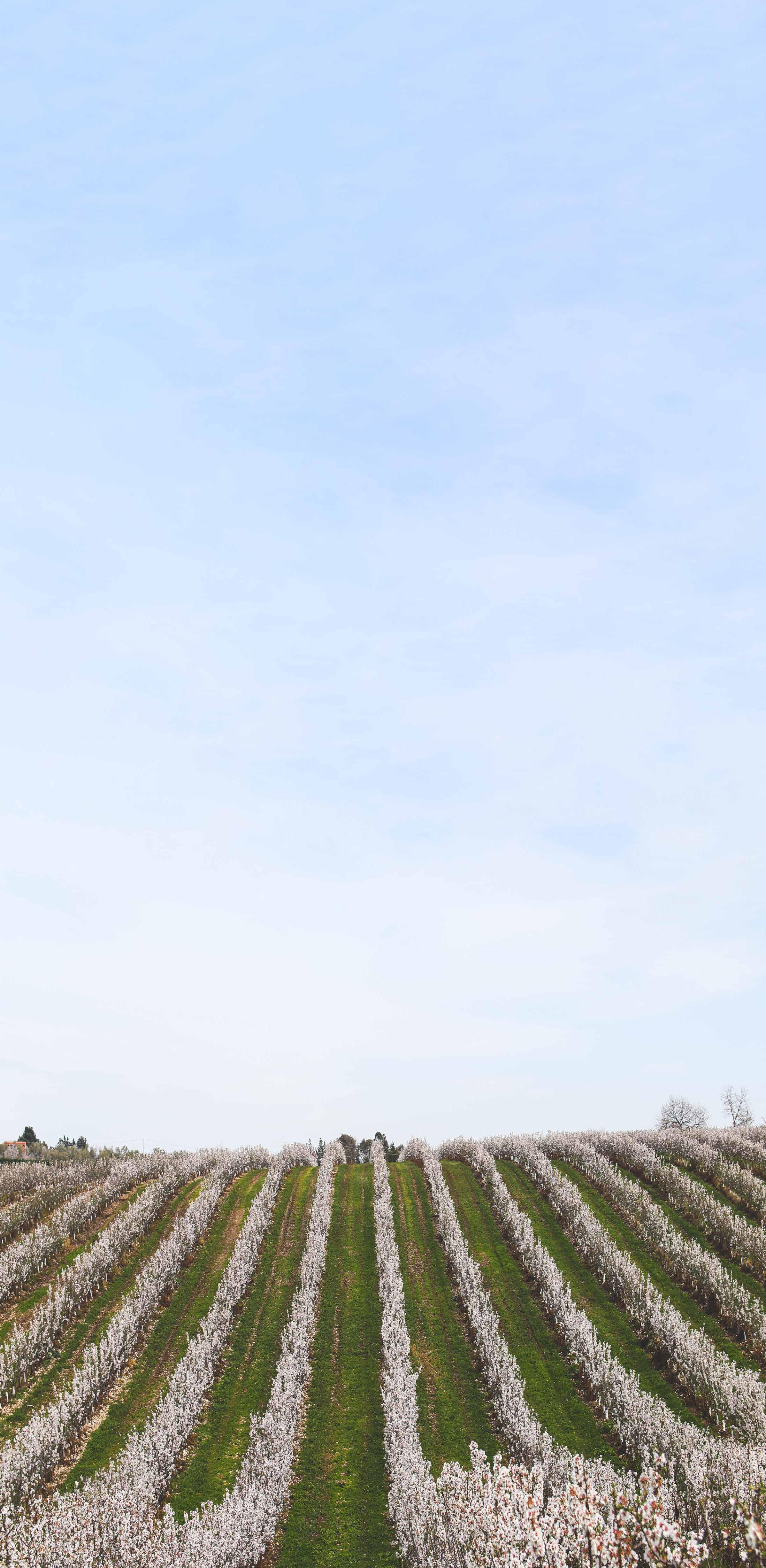
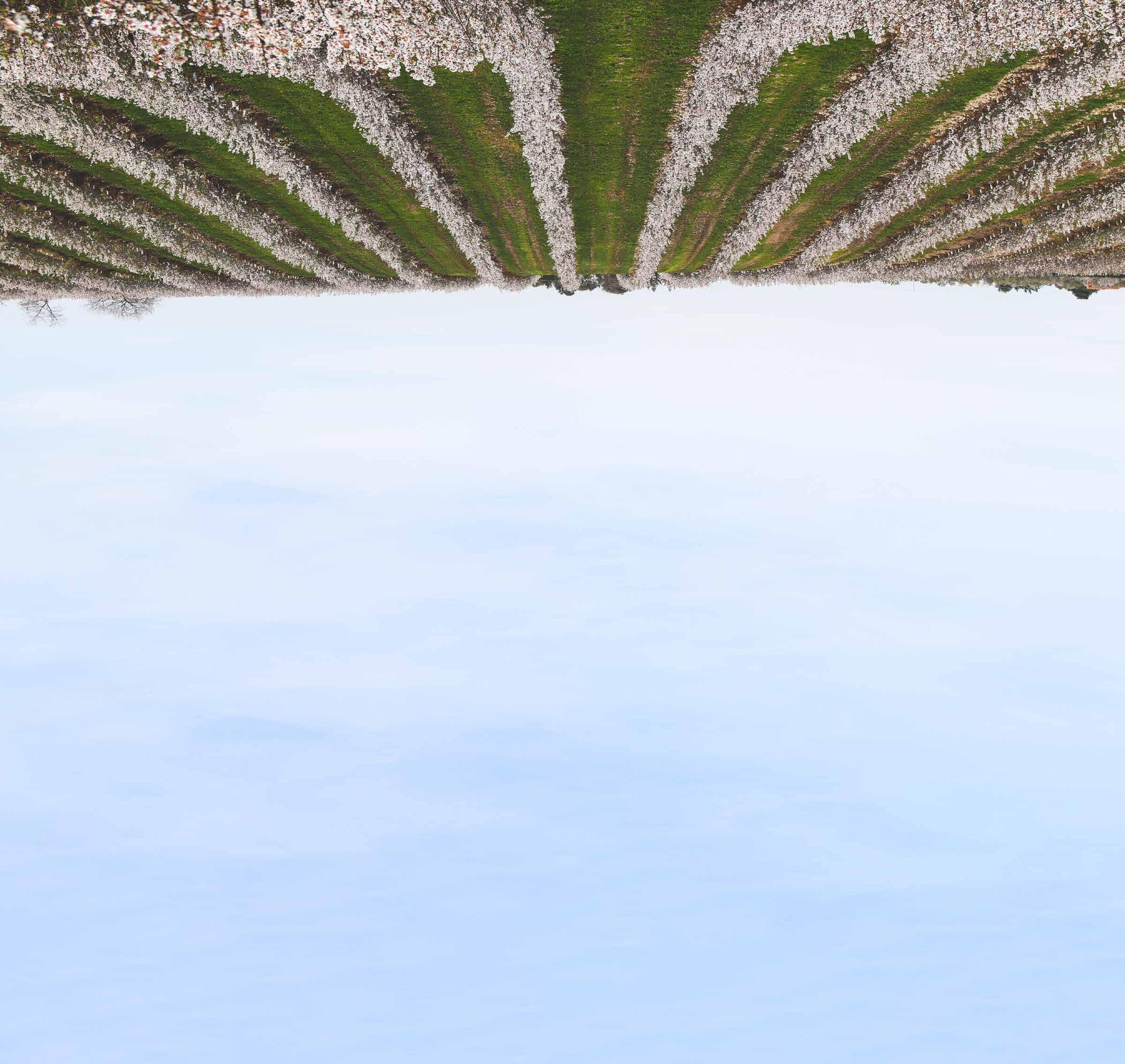
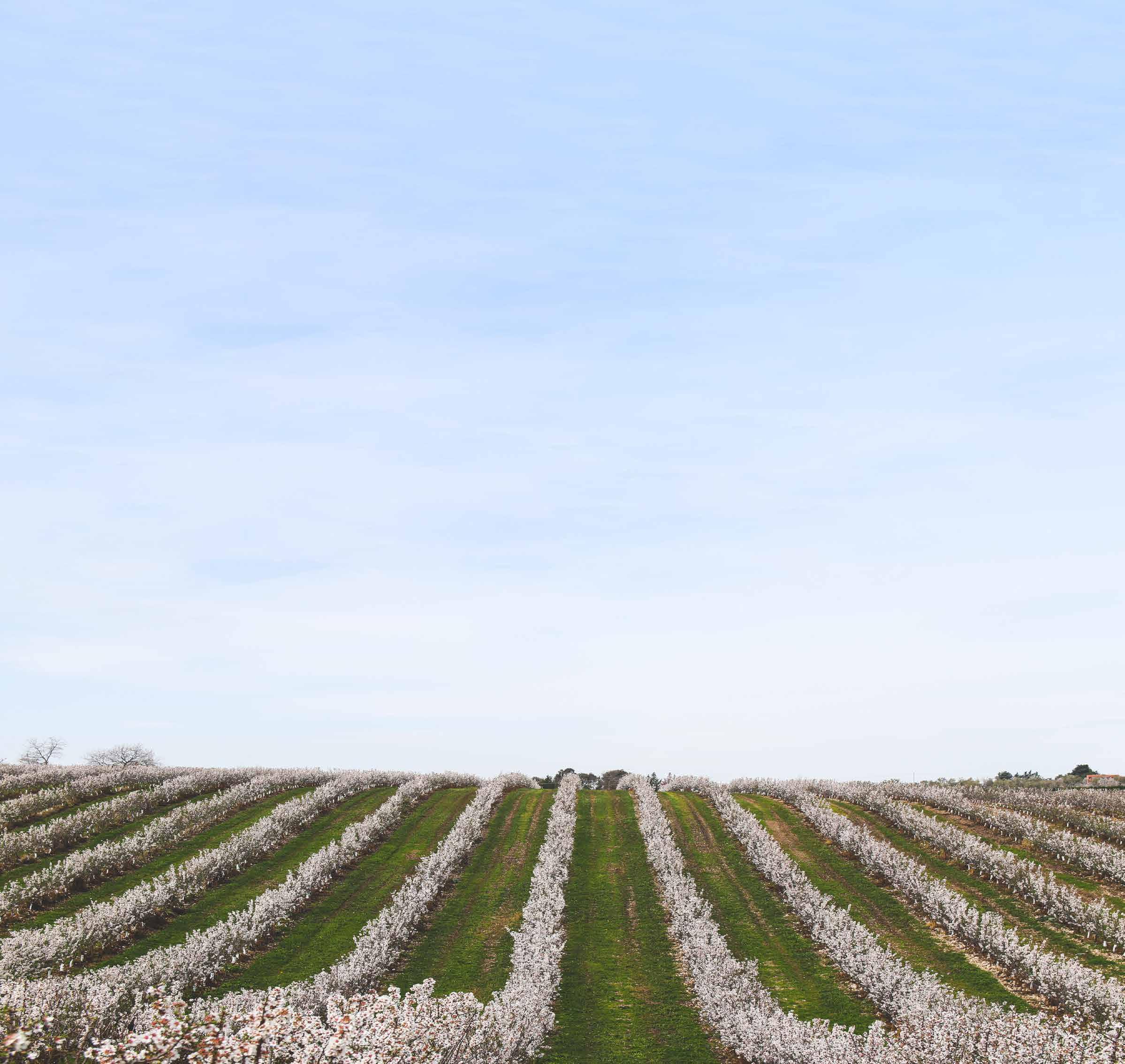







DEFEATING DISEASE

The most common and destructive root rot disease of southern highbush blueberry in Florida is Phytophthoraroot rot caused by the oomycete pathogen Phytophthoracinnamomi. PRR is a persistent problem that is currently managed through careful site selection, preparation, and routine Phytophthora-specific fungicide applications.
CRAFT YOUR ATTACK AGAINST CHILLI THRIPS
As late spring and early summer approach, it’s time to start thinking about managing chilli thrips. This has been reported as the most significant insect pest on blueberries in Florida, often taking repeated applications of different insecticides to achieve and maintain control.
PESTICIDE MODULE DEBUTS ON APP

The UF/IFAS Blueberry Breeding Program has released a new pesticide module as part of its UF/IFAS Blueberry Growers Guide app. This new module is a quick reference guide for certain information on pesticides labeled for highbush blueberry in Florida, including re-entry Interval (REI), preharvest Interval (PHI), application rates, and certain restrictions, including maximum annual/seasonal application rates and minimum intervals between applications.
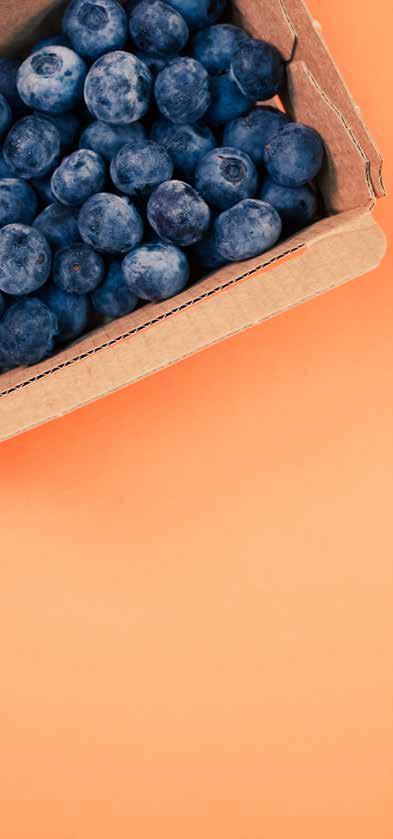
31 PRUNING WITH A PURPOSE
Pruning is an essential cultural practice for southern highbush blueberry production in Florida. Proper pruning can result in many benefits, including maintaining suitable plant vigor, balancing vegetative and reproductive growth, controlling plant size, improving plant shape and structure, facilitating practices such as spraying and harvesting, and reducing incidence of pests and diseases.
4 | The Blueberry News 6 Meeting Preview 7 President's Letter 10 Bug of the Month 11 Topic of the Season 20 NABC Update 33 Classifieds 35 Grower 411 38 USHBC Update
fieldsequip.com 3203 HAVENDALE BLVD WINTER HAVEN, FL 33881 863-967-0602 3440 US HIGHWAY 17 SOUTH ZOLFO SPRINGS, FL 33890-0837 863-735-1122 17215 HIGHWAY 27 NORTH MINNEOLA, FL 34715-9273 352-394-7181 John Deere 3025E Tractor 300E Loader RC2060 Rotary Cutter 20’ Car Hauler Trailer “Nothing
a Deere” Test Drive One Today! Package Deal Only $32,489.00 ASK ABOUT ALL OF OUR TRACTOR PACKAGES $32,489.001 1O er ends 6/30/23. Prices and model availability may vary by dealer. Some restrictions apply; other special rates and terms may be available, so see your dealer for details and other nancing options. Available at participating dealers.
Runs Like

FloridaBlueberryGrowers.org 5
FALL CONFERENCE AND TRADE SHOW
PUBLISHER
Nelson Kirkland
MANAGING EDITOR


Jessica McDonald
DIGITAL DIRECTOR
Tyler DiGiovine

LIAISON EDITORS
Doug Phillips, Jeff Williamson
CONTRIBUTING WRITERS





















Doug Phillips, Jeff Williamson, Oscar Liburd, Phil Harmon, Patricio Muñoz
CONTRIBUTING PHOTOGRAPHERS
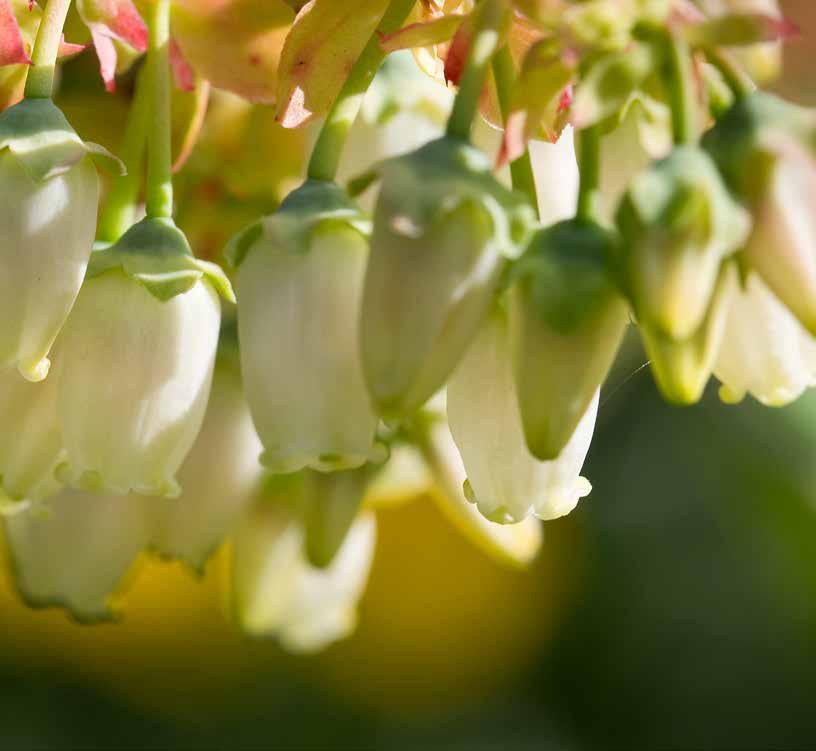
Doug Phillips, Jeff Williamson
CONTRIBUTING ARTISTS

Dawn Lewandowski
DELIVERY
DLS Distributors



6 | The Blueberry News FloridaBlueberryGrowers.org www.FloridaBlueberryGrowers.org Published by Central Florida Media Group in cooperation with the Florida Blueberry Growers Association Copyright © 2023 Central Florida Media Group. ALL RIGHTS RESERVED. This issue of The Blueberry News is a trademark of Central Florida Media Group. Reproduction or use in whole or in part of the contents of this magazine without written permission is prohibited. The Blueberry News makes every effort to ensure the accuracy of content published. In the event of an error found herein however, neither the publishers or advertisers will be held responsible, nor do the publishers accept any liability for the accuracy of statements made by advertisers in advertising and promotional materials. Furthermore, the opinions and claims expressed in advertisements and promotional materials do not necessarily reflect those of the Florida Blueberry Growers Association or Central Florida Media Group and
not imply an endorsement. 56 Fourth Street Northwest, Suite 100 Winter Haven, Florida PHONE 863.248.7537
do
OCTOBER 25 BONNET SPRINGS PARK LAKELAND, FL
SAVE THE DATE WEDNESDAY,
P.O. BOX 358086


Gainesville, FL 32635









352-448-1418
Beth Eng
Interim Executive Director
Leonard Park President
Kyle Straughn Vice President
Travis Kuhn Secretary
Cameron Allison Treasurer
Board of Directors
Jerod Gross
Bobby Barben
Gary Smith
Marcelo Estrada
Shawn Pollard
Jack Green



Jason Carlton
Jeff Williamson Extension Member

Doug Phillips
Extension Member
Phil Harmon
Research Member
The Importance of Planning
Ihope you made it to the FBGA Spring Field Day at the UF Citra Research Station. If you did, you got to join fellow blueberry growers and our dedicated University of Florida staff of experts. Our program was jam packed with important presentations indoors and in-field covering subjects on pollination, pH and nutrition, phosphorus nutrition research, weed research, grafting research, an honest summary of the effectiveness of biostimulants in agriculture, and more.
Blueberry growers know they have to plan well in advance to be successful, and a key to that success is actually learning what to plan for. So you need to learn how to grow well, you need to build a brain trust of grower friends and allied business experts. You need a forum for sharing ideas and new innovations. Just as important, you need to develop an understanding of how the blueberry industry and its markets work.
One of the best ways to learn what to plan for is to gather with other Florida growers at a venue programmed to address these subjects in a unique blueberry-focused event. The FBGA has such an event already scheduled so you can make sure you plan well ahead to attend. So mark your calendar for Wednesday, October 25, so you can learn what to plan for. The 2023 FBGA Fall Meeting and Short Course will convene at the beautiful new Bonnet
Postscript: Harvest 2023
Springs Park facility conveniently situated on 168 acres of natural beauty. Visit bonnetspringspark.com and invite your spouse to come, too. It’s just outside of downtown Lakeland off the I-4 corridor.
Join us to learn how to grow blueberries better, to meet blueberry growers like yourself, to visit a trade show targeted to your operation, to earn CEUs and to learn more about the industry that provides your livelihood.

I hope you make it.
During Florida’s harvest window, March through May, a lot of white water is going over the proverbial dam. As I write to you, it’s late March and seems, once again, that our harvest window will coincide with a peak of economic and geopolitical uncertainty. Remember the Covid harvest season of 2020? Now we face a laundry list of issues: high inflation, teetering banks, a looming recession, the expected spring offensive in Ukraine, escalating threats from China, not to mention the ever increasing volume of Mexican fruit already flooding our Florida harvest window. And for many of our growers, a challenging recovery from Hurricane Ian.
Despite it all, we are most fortunate to grow a crop ever increasing in demand both here in the USA and more recently around the world. We really do have some of the best fruit grown anywhere. Consumers are finally coming to understand why they should take home our blueberries. Florida-grown fruit is American grown, local, safe, secure, fresh, healthy, and full of flavor. These trump our laundry list of problems.

president’s letter
Leonard Park President Florida Blueberry Growers Association
Defeating Disease
A Closer Look at the Symptoms and Management of Phytophthora Root Rot

The most common and destructive root rot disease of southern highbush blueberry (SHB) in Florida is Phytophthora root rot (PRR) caused by the oomycete pathogen Phytophthora cinnamomi. PRR is a persistent problem that is currently managed through careful site selection, preparation, and routine Phytophthora-specific fungicide applications.
Disease Cycle
Phytophthora cinnamomi survives on dead and decaying plant tissues in Florida soils and should be assumed to be a potential problem on all farms with favorable disease conditions. Like all plant diseases, PRR requires a susceptible host to come into contact with a pathogen during a period of favorable environmental conditions for infection and disease development. Water-saturated root zones lack oxygen that blueberry roots need, leading to root stress and
damage. Saturated soils also provide an ideal environment for the pathogen to produce reproductive spores (zoospores) that infect blueberry roots. The more frequent and increasing duration of root zone saturation, the more likely that infection will occur, and the more severe the disease symptoms will become.
Zoospores have tiny propellerlike appendages they use to swim toward stressed and wounded blueberry roots. They will die if they dry out before finding a host to infect or
come into contact with an effective fungicide. However, if the spores find wounds or natural root openings, they initiate the infection process and move inside the plants’ roots. The pathogen is protected inside the roots and kills root cells, spreading through the root system and into the crown of the plant. As the pathogen spreads and multiplies in fields, the population rises, increasing chances of successful infections and additional disease during periods of favorable disease conditions.
Symptoms
The first symptoms of PRR occur underground on roots, where they are rarely observed. These symptoms include root discoloration (dark
8 | The Blueberry News FloridaBlueberryGrowers.org for the crop
Figure 1. Phytophthora root symptoms on blueberry (healthy roots on the plant on the left, PRR-damaged roots on the plant to the right) Credits: P. Harmon, UF/IFAS
brown to black, instead of the normal cinnamon brown), and rot (Figure 1). As the disease progresses and roots are not able to do their jobs, plants suffer from a lack of nutrients and water, resulting in above ground symptoms including stunting; yellowing and early fall leaf reddening (Figure 2); wilting (rarely); and eventually plant dieback. Other symptoms of drought stress, including marginal leaf burn and defoliation, can occur with both PRR and other root and vascular diseases like stem blight, bacterial leaf scorch, bacterial wilt, and others. Symptoms are frequently caused by more than one disease and/or stress, and the drought stress caused by PRR can make plants more susceptible to these other diseases, particularly Botryosphaeria stem blight.
The distribution of symptomatic plants within a field can be very helpful in locating PRR hot spots on a farm. PRR tends to affect many plants spanning down and across the rows resulting in circular to oblong “patches” of stunted and declining bushes. These patches tend to occur first in the lowest, most poorly drained areas of a field, where PRR symptoms also tend to be most severe. In fields that have a slope and use raised beds, PRR can be an issue where surface water pools at the ends of rows that are blocked by elevated end-of-row roads or mounds that impair surface drainage (Figure 3, on page 15).
One indicator of possible PRR in plants that show stunting or decline is excessive movement of the crown in the bed when a plant is shaken. Most healthy plants will resist rocking back and forth, while plants suffering from PRR will typically appear loose and are easily pulled free from the growing medium. The so-called “tug test” is an indicator of a compromised root system that could also be due to root issues unrelated to PRR.
Disease Management

The key to PRR management, like many other blueberry diseases, is prevention. Prevention of PRR starts with site selection and field preparation. Growers can limit PRR impacts

to production with practical and common-sense considerations involving irrigation management and water drainage. Blueberries planted in deep sands with excellent drainage may never experience PRR; however, where water tables are high or soils tend to hold water after rain events, growers should use ground contouring and ditching in conjunction with raised bed construction to prevent ponding of surface water. The height of raised
beds will vary by the water table level and the effectiveness of surface drainage on the site. For more information about this and other important site selection considerations, see the UF EDIS Publication HS742, Florida Commercial Blueberry Industry Guide (https://edis.ifas.ufl.edu/ publication/AC031).
continued on page 15
FloridaBlueberryGrowers.org The Blueberry News | 9
Figure 2. Phytophthora foliage symptoms on blueberry. Credits: D. Phillips, UF/IFAS
bug of the month
Craft Your Plan of Attack Against Chilli Thrips Management
and Control on Southern Highbush Blueberry
As late spring and early summer approach, it’s time to start thinking about managing chilli thrips. This has been reported as the most significant insect pest on blueberries in Florida, often taking repeated applications of different insecticides to achieve and maintain control.


and typically only fly short distances, initially forming “hot spots” in the fields and then moving to adjacent plants as the amount and quality of the foliage decreases. Heavy infestations of chilli thrips may occur during prolonged hot and dry periods (June through September), although growers often report seeing them beginning in May.
Description and Life Cycle
Chilli thrips feed primarily on young blueberry foliage, usually beginning in late May or early June with the first post-pruning foliar flush. Injury symptoms first appear as bronzing along leaf veins and petioles, and gradually leaves start to curl and distort (Figure 2). Heavy infestations cause leaf defoliation with extensive curling of leaves.
Management and Control
ing for the presence of adults is essential. Scouting can be done by observing young leaves with a 10X hand lens, tapping young foliage onto a white sheet of paper or using white or yellow sticky cards. Chilli thrips tend to have clumped distribution when a population begins to assemble in a field, therefore, sufficient samples should be taken to accurately estimate its population in the field
Description and Life Cycle
Chilli thrips adults are small (less than 1/16 inch in length) and ¾ size of flower thrips, with pale yellow bodies with dark fringed wings and dark brown incomplete stripes on the abdomen (Figure 1). The lifecycle of chilli thrips (i.e., egg to adult) is short and typically lasts about 18–20 days at 77–81°F, with four life stages: egg, larva, pupa and adult. Adult females can lay about 60 eggs in its lifetime, with eggs usually hatching in 5–8 days. Adults live for 20–25 days at 77°F.
Chilli thrips are not strong fliers

The appearance of bronzing on new flush may be the first indication of the presence of chilli thrips in blueberry fields. However, at that point populations may already have already become established, so scout-
An integrated management plan to control chilli thrips includes cultural, biological, and chemical control tactics. Cultural control consists of eliminating host plants (including weeds) in or near production fields that support the growth and development of chilli thrips. Natural predators can also be part of an integrated management program. Natural enemies such as Orius insidiosus (minute pirate bug, which feeds on all life stages of thrips), Amblyseius swirskii (predatory mites), and Geocoris spp. (big-eyed bugs) have shown some potential to manage chilli thrips populations if integrated with
continued on page 13
10 | The Blueberry News FloridaBlueberryGrowers.org
Figure 1. Adult chilli thrips. Credit: B. Panthi, UF/IFAS
Figure 2. Feeding injury caused by chilli thrips feeding on blueberry leaves. Credit: B. Panthi, O. Liburd, UF/IFAS
of the season
Management Strategies For Spring and Early Summer
by DOUG PHILLIPS, UF/IFAS Blueberry Extension, JEFFREY G. WILLIAMSON, Horticultural Sciences Department, PHILIP F. HARMON, Department of Plant Pathology, OSCAR E. LIBURD, Entomology and Nematology Department, and PETER DITTMAR, Horticultural Sciences Department, all with the University of Florida/IFAS.

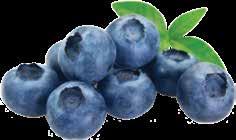
The following tables were updated from the 2022 UF/IFAS Florida Blueberry Integrated Pest Management Guide found at edis.ifas.ufl.edu/hs380. This publication is intended for use only as a guide. Specific rates and application methods are on the pesticide label, and these are subject to change at any time. Always refer to and read the pesticide label before making any application! The pesticide label supersedes any information contained in this guide, and it is the legal document referenced for application standards.
POLLINATOR PROTECTION
Before making insecticide applications, monitor insect populations to determine if treatment is needed. If insecticide application is necessary:
1. Use selective pesticides to reduce risk to pollinators and other non-target beneficial insects.

2. Read and follow all pesticide label directions and precautions. The label is the Law! EPA now requires the addition of a “Protection of Pollinators” advisory box on certain pesticide labels. Look for the bee hazard icon in the Directions for Use and within crop specific sections for instructions to protect bees and other insect pollinators.
3. Minimize infield exposure of bees to pesticides by avoiding applications when bees are actively foraging in the crops. Bee flower visitation rate is highest in early morning. Apply pesticides in the late afternoon or early evening to allow for maximum residue degradation before bees return the next morning. Bee foraging activity is also dependent upon time of year (temperature) and stage of crop growth. The greatest risk of bee exposure is during bloom.
4. Minimize off-target movement of pesticide applications by following label directions to minimize off-target movement of pesticides. Do not make pesticide applications when the wind is blowing towards bee hives or off-site pollinator habitats.
SPRING AND EARLY SUMMER DISEASES AND PESTS PHYTOPHTHORA ROOT ROT
Phytophthora root rot (PRR) is considered the most serious soilborne disease that affects southern highbush blueberries (SHB). Some SHB cultivars are considered tolerant and others highly susceptible, while rabbiteye cultivars are less affected by the disease. PRR is caused by the oomycete pathogen Phytophthora cinnamomi. Common aboveground symptoms associated with Phytophthora infections are reductions in plant vigor and premature fall discoloration. Symptoms at ground level and belowground include crown and root rots. Disease on susceptible hosts occurs when certain environmental conditions (primarily a saturated root zone and root wounding) trigger Phytophthora reproduction, infection and symptom development. PRR is typically more severe in low and poorly drained areas of a farm. The pathogen causes root discoloration (dark brown to black, instead of the normal cinnamon brown) and decay. Advanced stages of infection cause plant stunting, wilting, an abnormal or reduced root system, root rot, and plant dieback. Leaf discoloration also typically occurs, including yellowing, reddening with or without marginal burn, abnormal growth of new leaves, and defoliation. Plants affected by PRR may also be more susceptible to other dieback diseases including stem blight. Fungicides with the active ingredient mefenoxam, such as Ridomil Gold SL, are recommended where PRR occurs and are applied twice yearly (typically in January and June) through drip irrigation or as a band application directly to the bed. In addition to the phenylamide fungicide mefenoxam, which is applied to the soil, Aliette (Fosetyl-Al 80%) and numerous phosphorous acid products, referred to as “phites” or phosphonates, provide some control when applied as summer foliar sprays. See Table 1.
BLUEBERRY GALL MIDGE

The blueberry gall midge (BGM) is a tiny fly whose larvae feed on vegetative and floral buds. Typically, gall midge will attack young developing floral and leaf buds, which will cause floral buds to abort or fall off the bush, resulting in poor flowering and “fruit set.” With heavy gall midge injury to floral buds, there would be a lighter bloom. Instead of the usual 5 to 6 buds producing several flowers, only 2 may reach maturity, resulting in poor fruit clusters. Blueberry gall midge will also feed on leaf or vegetative buds, leaving young leaves deformed and misshaped. Gall midges lay eggs on warm winter days and at any time during the growing season when the plants are making new flushes of growth. Delegate® (Spinetoram), Exirel® (Cyantraniliprole), diazinon (if labeled for use on your site), Apta® (Tolfenpyrad), and Movento® (Spirotetramat)
continued on next page
FloridaBlueberryGrowers.org The Blueberry News | 11 topic
topic of the season
continued from previous page
SPRING AND EARLY SUMMER DISEASES AND PESTS, CONT.
can be applied for gall midge control between flower bud stages 2 and 3 (Figures 2 and 3). Application should take place when the most mature buds first show slight scale separation. Sprays may need to be repeated during warm spells. Bud scale separation may occur as early as December 15th in north Florida. Among rabbiteye cultivars, 'Premier' is often particularly attractive to the gall midge and is a good sentinel variety to monitor. Gall midge sprays can also suppress a prebloom thrips population. See Table 2.
IMPORTED FIRE ANTS
Ant baits employed in early spring as a broadcast treatment usually eliminate most but not all fire ant mounds within treated areas. Under high ant pressure, treating a second time in the fall provides better fire ant control. Most ant baits are slow acting and require up to 8 weeks to control active mounds because they interfere with reproduction, causing a gradual colony die-off. Extinguish® Professional Fire Ant Bait (0.5% methoprene) is labeled for use on all crop land sites. It is effective but somewhat slower acting than Esteem® Ant Bait (0.5% pyriproxyfen). In order for the bait to be effective, active ant foraging is essential. Worker ants must be attracted to baits so that they will carry the baits back to their colonies. Ideally, temperatures should be warm and sunny. Ant baits work best when the soil is moist but not wet. Avoid applying ant baits when conditions are expected to be cold, overcast, rainy, or very hot. Individual mound treatments are most effective when used as needed for the occasional colony that survives broadcast treatments. Mound treatments using insecticide baits should be applied in a circle 3–4 feet from the mound. Baits should not be placed directly on top of mounds so that mounds remain undisturbed. The colony will move the queen to safety if mounds are disturbed. See Table 2.
SCALE
Scale insects injure blueberries by sucking plant sap, inserting their mouthparts into a plant and remaining immobile throughout their lives. Signs of infestation are leaf yellowing (chlorosis), defoliation, fruit drop, sooty mold, branch dieback, or plant death. Soft scales, Coccidae, secrete a waxy covering over the body. They also secrete a large amount of sugary waste (honeydew) resulting in sooty mold, which can interfere with photosynthesis and slow plant growth. Of the soft scales, Indian Wax scale, Ceroplastes ceriferus (Fabricius), is the most prolific on blueberries in Florida. See Table 2.
ALTERNARIA AND ANTHRACNOSE FRUIT ROTS
Alternaria fruit rot occurs most frequently when fruit is not timely harvested and remains on the bush for too long. Symptoms include darkgreen to black sporulation on ripe fruit and sunken areas near the calyx end of the berry. In postharvest storage, green to gray fuzzy growth may appear on infected fruit, especially if the berries have remained wet or were not properly cooled. Preventive fungicide applications can be made to help minimize disease development.
Anthracnose fruit rot is also referred to as "ripe rot." Infection may occur as early as bloom, with symptoms appearing as the fruit begins to ripen, including shriveling, development of sunken lesions, soft, rotted fruit, and eruption of orange- or salmon-colored spore masses on the blossom end of the fruit. In some cases, symptoms do not appear until after the fruit is harvested and stored. Fungicide applications from bloom through harvest prevent significant ripe rot losses most years when coupled with frequent hand-harvesting and rapid-cooling practices that are standard for southern highbush blueberry growers in Florida. Preharvest fungicides are especially important in years where there is a high incidence of disease in the field coupled with warm, wet weather, which can promote disease development. See Table 1.
BLUEBERRY MAGGOT
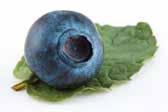
Blueberry maggot (BBM) is only a problem for growers north of the Lake City and Live Oak areas. Growers in Gainesville and south of Gainesville should not experience any problems with blueberry maggot. Blueberry maggot is a late-season pest. If berries are infested with BBM, a whitish maggot will appear in the fruit at harvesting. The adult fly that lays the eggs can be monitored by hanging yellow sticky traps (baited with ammonium acetate) within the bush canopy, at least one per cultivar. Trap catches indicate when adults are present. Traps should be hung in the planting when berries begin to turn from full green to the greenish-pink stage. See your county Extension agent for identification pictures and further reference. If your planting has a history of BBM infestation, spray as soon as adults are trapped. Once spraying for BBM begins, it is very important to spray every 7–14 days until all the fruit has been harvested. Materials and spray intervals are listed below. All growers in Florida who are shipping blueberries to Canada or the United Kingdom must comply with appropriate guidelines for scouting, spraying, and postharvest inspection of berries, including a protocol for cooking samples of harvested fruit to test for the presence of the maggot in berries. The Canadian protocol states that blueberries must be certified maggot-free to enter Canada. See Table 2.

DIAPREPES (CITRUS ROOT WEEVIL)
Diaprepes larvae damage blueberry plants by feeding on the roots, including channeling and holes in the roots and feeding injury and girdling near the crown of the plant. Note that this damage is frequently observed some period of time after the larvae begin to feed on the roots, and at
continued on page 14
12 | The Blueberry News FloridaBlueberryGrowers.org
bug of the month , continued from page 10
other tactics.
Chemical insecticides are the primary means to manage chilli thrips populations in blueberry. Reduced-risk insecticides registered for controlling chilli thrips in blueberry are spinetoram (Delegate®), tolfenpyrad (Apta®), cyantraniliprole (Exirel®), acetamiprid (Assail®), and flupyradifurone (Sivanto®). Spinosad (Entrust®) can be used to manage this pest in organic blueberry production. In a recent field trial, tolfenpyrad and acetamiprid were the most effective of the insecticides evaluated measured by the number of thrips per leaf after treatment, and tolfenpyrad and flupyradifurone with Induce were most effective based on leaf bronzing ratings following treatment. In recent years some growers have reported decreased effectiveness of spinetoram for thrips management in Florida. A list of products registered for managing chilli thrips in Florida blueberries along with their active ingredients and insecticide classes is provided in Table 1. Be sure to follow all insecticide label instructions, including rotating appropriate products with different modes of action to help minimize the development of insecticide resistance.

This table lists registered pesticides that should be integrated with other pest-management methods. Additional information on integrated pest management methods can be requested from UF/IFAS Extension horticulture or agri-
culture Extension agents. A list of local UF/IFAS Extension county offices is available at https://ifas.ufl.edu/.


- IsariafumosoroseusApopkastrain97 PFR-97 20%WDG*
1Insecticide Resistance Action Committee (IRAC) Mode of Action Classification v. 8.2 March 2017. Source (Vegetable Production Handbook of Florida, 2017-18).
DR. OSCAR LIBURD, professor, UF/IFAS & DOUG PHILLIPS, Blueberry Extension Coordinator, UF/IFAS
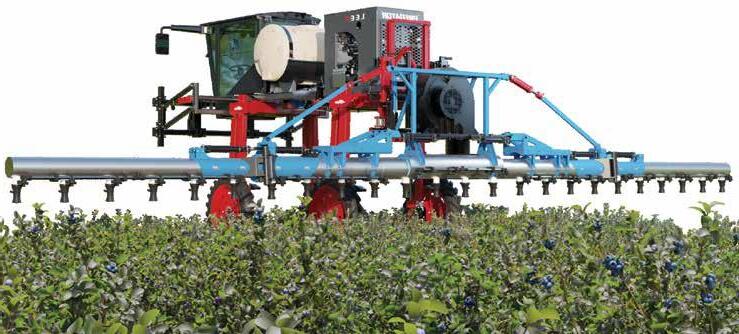
FloridaBlueberryGrowers.org The Blueberry News | 13 irtec ISprayers nc
us about the latest cost share programs
FOR ALL YOUR BLUEBERRY NEEDS! Lee Agra Articulating over the Row Tractor with Airtec Airboom Ask
_________ CREDIT
IRAC code1 Chemical group Active ingredients Registered products 1B Organophosphates Malathion Malathion 57EC Diazinon Diazinon 50W, AG600 WBC 3A Pyrethroids Pyrethrins PyGanic EC 5.0, Azera Fenpropathrin Danitol 2.4 EC Bifenthrin Brigade WSB
Neonicotinoids Acetamiprid Assail
4D Butenolides Flupyradifurone Sivanto
5 Spinosyns Spinetoram Delegate
Spinosad Entrust
15 Benzoylureas Novaluron Rimon 28 Diamides Cyantraniliprole Exirel UN - Azadiractin Aza-Direct,
EC UN
UN
PRAA4-1 Grandevo
UN
4A
70WP
200 SL, Prime
WG
(for organic use)
Neemix 4.5%
- Beauvariabassianastrain GHA BotaniGard ES, Mycotrol ESO
- Chromobacteriumsubtsugaestrain
UN - Metarhiziumanisopliaestrain F52v MET52 EC
Table 1.
topic of the season
continued from page 12
SPRING AND EARLY SUMMER DISEASES AND PESTS, CONT.

that point damage near the crown can appear similar to the effects of root girdling or mechanical wounding and abrasion. These injuries can kill or cause serious decline in blueberry plants and may also create an entry point for Phytophthora, causing a root rot infection. Management and control should target both the adult and larval stages. Control for adults consists of foliar insecticide sprays every 10–14 days when adults are active, beginning when 3 or more adults are found within 1-acre blocks. Larvae can be managed with insecticides either by directly drenching the soil area beneath the plant canopy or by applying them through drip or microjet irrigation systems. In addition, entomopathogenic nematodes may have potential for controlling root weevil larvae in blueberry. See Table 2.
PREHARVEST FRUIT

FLATHEADED BORERS
Flatheaded borers are a species of beetle in the Chrysobothris genus. The larvae tunnel through plant canes, ultimately killing the cane and acting as an entry point for disease. It is possible that adult beetles are attracted to stressed or damaged blueberry canes, with adult females laying eggs on the injured area, and larvae excavating tunnels just beneath the bark. This is a relatively new pest in blueberry, and research is ongoing regarding its life cycle, monitoring and trapping protocols, and control measures. See Table 2.
SPOTTED WING DROSOPHILA
Spotted Wing Drosophila (SWD) have been caught in all principal blueberry counties in Florida. Adults lay eggs in ripening blueberries, and larvae develop inside the berry, making the fruits soft and unmarketable. Adults can be monitored by placing traps in blueberry bushes. Traps can be made from plastic cups and baited with yeast sugar water. Traps should be placed within the canopy of the blueberry bush and not in direct sunlight. A number of insecticides have recently been registered for control of spotted wing drosophila. See Table 2.
ALGAL STEM BLOTCH
Algal stem blotch is a blueberry disease caused by the parasitic green alga Cephaleuros virescens Kunze, and it has become a significant disease on southern highbush blueberries in Florida. The alga is thought to enter the plant through natural wounds and openings, through pruning cuts, or by direct penetration of the cuticle. Early symptoms include small red blotches or lesions on green juvenile stems, with lesions expanding to form irregular cankers that can encircle canes. Bright-orange felt-like mats or tufts of algal growth appear from the lesions on young stems and older cane surfaces during summer and early fall when conditions are hot and humid. Leaves on symptomatic canes bleach white to pale yellow, and growth of the entire plant can be severely stunted as the disease advances. Leaf yellowing tends to occur on a few canes of each plant and is less uniform and blotchier than symptoms of nutritional deficiency. Algal stem blotch can lead to increased susceptibility to Botryosphaeria stem blight, in some cases leading to plant death. Plants that are stressed by abiotic or biotic factors are more susceptible to infection and subsequent disease development. To date, no systemic pesticide products have been found that will kill the algae living underneath the plant epidermis. Spray applications of copper-containing fungicides can help to reduce algal sporulation and protect healthy canes from infection for a few days after application. However, these applications do not impact existing symptoms or eradicate the disease. See Table 1.
ANTHRACNOSE LEAF SPOT, RUST, SEPTORIA, AND TARGET SPOT
Anthracnose, Septoria, rust, and target spot can cause premature defoliation, resulting in poor bud development and subsequent loss of yield. Fungicide timing for leaf spots varies across the state and by specific disease. Septoria can occur prior to harvest through late spring. Anthracnose leaf spots and target spots generally start postharvest and persist through summer. Rust is a problem in all Florida production areas. On susceptible varieties, rust can prematurely defoliate plants. Where leaves are not dropped in winter, rust can carry over on the previous year's foliage and can cause rust problems in early spring as well. Bravo Weather Stik® is labeled for control of both rust and Septoria leaf spots; this chlorothalonil product makes an excellent rotation partner for the strobilurin-containing products Abound® or Pristine®. However, Bravo Weather Stik® can only be used after harvest because chlorothalonil will damage fruit. See Table 1.
BACTERIAL SCORCH (XYLELLA)
Bacterial leaf scorch, caused by Xylella fastidiosa, was first identified on blueberry in 2006 in the southeastern United States. Symptoms begin as a marginal-irregular leaf scorch, which may appear similar to symptoms of bacterial wilt or drought stress. Symptoms are initially observed on leaves attached to individual stems or groups of stems on one side of a plant. Plant vigor is reduced, stems and twigs of some varieties such as 'Meadowlark' turn a distinctive yellow color, and the plants eventually die. Diseased plants are typically observed randomly scattered throughout a field, rather than in distinct circles or groups within a row. Infected plants should be removed and destroyed. This bacterial pathogen is vectored by insects called sharpshooters and spittle bugs, including the glassy-winged sharpshooter. Infection levels may be reduced by controlling the vector with suggested insecticides.
continued on page 16
14 | The Blueberry News FloridaBlueberryGrowers.org
for the crop , continued from page 15
PRR can also be a problem in nursery production sites, so rooting beds, liner production, and plant finishing beds should be located and constructed to avoid flooding while providing the necessary water for each step to be successful. In general, potted plants should be grown on an impermeable surface, preferably raised above the ground on benches. Potted plants in production that are flooded by surface water after rain events should be discarded, and pots and contact surfaces sanitized prior to reuse. Many sanitizing agents are available to choose from, including household bleach, quaternary ammonium products, hydrogen dioxides, alcohols, and others. See https://www. growables.org/information/documents/DesinfectionHorticultural -
Tools.pdf for more information. Growers should start with healthy plants free from Phytophthora
Two fungicide groups with PRR efficacy are used on blueberry in Florida. The first contains fungicides in the phenylamide group (FRAC group 4) with the active ingredient mefenoxam. Ridomil Gold SL is one example. Label instructions should be followed carefully to achieve the best results. Specifically, Ridomil is applied directly to the soil/ growing medium and NOT sprayed on the leaves and canes of the plant. Ridomil should be sprayed on the bed in a 3-foot-wide band or can be applied through drip or micro-sprinkler irrigation systems. Two applications per season are allowed with the first recommended in winter before plants bloom.
This timing will help prevent root rot through freeze protection events that can leave soils saturated. The second application of Ridomil should be made after harvest when regular summer rains return, or approximately six months after the first application (June to August).

The second group of fungicides labeled for PRR management in blueberry is the phosphonates (FRAC Group P07). Phosphonate products may contain the active ingredients phosphorous acid or salts of phosphorous acid and are sometimes referred to as “phites” (ProPhyte is an example). Products with the fungicide fosetyl-al are also phosphonates (Aliette is an example).
continued on page 32
FloridaBlueberryGrowers.org The Blueberry News | 15
Figure 3. Surface water pooling at ends of rows. Credits: P. Harmon, UF/IFAS
topic of the season
continued from page 14
SPRING AND EARLY SUMMER DISEASES AND PESTS, CONT. BACTERIAL WILT (RALSTONIA)
Symptoms of bacterial wilt are similar to those of bacterial scorch, exhibiting signs of drought stress such as wilting and marginal leaf burn. Infected plants may also be more susceptible to developing severe symptoms of other stress diseases, such as Botryosphaeria stem blight, and therefore may show symptoms of both diseases. Crowns of plants with bacterial wilt have a mottled discoloration or light-brown to silvery purple blotches with poorly defined borders (distinct from the discoloration associated with stem, which is typically pie-piece-shaped and pecan brown in color). Wood chips floated in water from the crowns of plants with bacterial wilt will stream bacterial ooze (unlike plants with bacterial scorch or stem blight). Ralstonia can be spread easily in water, in soil, or through infected plant material, and infected plants may not initially show symptoms. Ralstonia can survive for years in soil, slowly spreading down and across rows of blueberry, leaving large circular patches of dead and dying plants. Where the bacterium is detected, remove and burn or deep-bury infected plants. Then, use soil drenches of products with phosphorous acids or salts to help protect surrounding plants or any replants from infection. See Table 1.
BLUEBERRY BUD MITE


The blueberry bud mite is an eriophyid mite so tiny (i.e., 1/125 inch long) that it cannot be seen without magnification. Blueberry bud mite is an occasional pest in well-established blueberries in Florida. Bud mite injury is often confused with frost damage and may become more visible in late spring. In early spring, infested plants exhibit stunted, succulent, fleshy, closely packed, reddish, and rosetted buds, which may dry up and often fail to open. Bloom on infested plants is reduced. Affected berries are small and rough and may have small, reddish pimples or blisters on the fruit surface. Sanitation by aggressive, timely pruning of infested branches can be helpful. Mechanical topping (i.e., mowing old fruiting twigs) immediately after harvest greatly reduces bud mite incidence the following year. Bushes that may be infested with blueberry bud mite should never be used for propagation. The application of horticultural oil immediately after harvest can help in the control of blueberry bud mite. A new miticide, Magister® (fenazaquin) was recently registered in blueberries and should provide some protection against eriophyids. The insecticide Apta® (tolfenpyrad) should also provide protection against eriophyids. Blueberry bud mites belong to this group. Conventional insecticides such as pyrethroids have miticidal effects and can be used to help reduce bud mite infestation. See Table 2.
CHILLI THRIPS
Chilli thrips are becoming a more pronounced problem in blueberry. Adults feed on blueberries in late spring to early summer shortly after the bushes are pruned. Chilli thrips feed primarily on young leaves, causing leaf bronzing and shoot dieback. During heavy infestation, the edges around younger leaves and stems are eaten and leaf curling occurs. The chilli thrips are smaller than the flower thrips and are approximately 0.04 inches long with dark fringed wings and dark spots across the back of the abdomen. Insecticides that can be used to manage chilli thrips include Delegate® (spinetoram), Assail® (acetamiprid), Sivanto® (flupyradifurone), and Apta® (tolfenpyrad). Conventional products that can be used to manage chilli thrips include Malathion and Sevin® (carbaryl). See Table 2.
DIEBACK DISEASES OF SOUTHERN HIGHBUSH VARIETIES
Most southern highbush varieties are hedged immediately after harvest. Hedging cuts can serve as an entry point for many stem pathogens. At the end of each day of hedging, application of broad-spectrum fungicides such as Captan mixed with Prophyt® may help reduce infection. Resistance to azoxystrobin has been confirmed for Anthracnose stem dieback in central Florida. Do not use Abound® as a stand-alone application where resistance is known, but tank-mix with Captan or Bravo. See Table 1.
FLEA BEETLES
The blueberry flea beetle can cause serious damage during the summer months. Blueberry flea beetle eggs, and possibly adults, overwinter in the leaf litter of blueberry fields. Eggs are very small and orange-yellow in color, and hatching coincides with leaf bud opening. Larvae migrate to the foliage and feed on blossoms and leaf margins, giving the leaves a notched appearance. The larval stage takes 9–20 days to complete. Fully-grown larvae fall to the soil and pupate, with adults emerging approximately 15–28 days later. Adults are less than 0.25 inches in length, oval shaped, and a shiny copper bronze or metallic blue in color, and they chew small holes in the foliage. Adults mate and lay up to 200 eggs per female. The blueberry flea beetle has several generations per year in the southern United States. See Table 2.
SPIDER MITES
The southern red mite is the key spider mite pest attacking blueberry plants in Florida. Southern red mites primarily infest the lower side of the leaf, giving the leaf a bronzing appearance when the population is high. Southern red mites also produce a protective web made of silk over the infested surface to protect them from predators. The underside of leaves should be closely examined with a 10x hand lens for adults, shed skins, and webbing. Tapping foliage onto a sheet of white paper can also be used to find adult mites. A few miticides, including fenazaquin (Magister®), fenpyroximate (Portal®) and acequinocyl (Kanemite®), have recently been labelled for spider mites. See Table 2.
continued on page 18
16 | The Blueberry News FloridaBlueberryGrowers.org





INVEST IN YOUR RETURN TODAY!
topic of the season
continued from page 16
TABLE 1. DISEASE MANAGEMENT OPTIONS
Make applications after harvest on a monthly interval following bacterial canker use instructions. Ensure good cane coverage and canopy penetration. Do not mix with Aliette®, any phosphite fungicide, or any acidifying agents. Do not exceed 28 lb per acre per year. Copper products provide preventive management of algal stem blotch only.
other copper products
Anthracnose, Septoria, target spot, and rust leaf diseases
Pyraclostrobin + boscalid (Pristine®)
Many formulations and products that contain copper are labeled for use on blueberry at various rates and application intervals. Carefully follow all label instructions for any product to avoid phytotoxicity. Algal stem blotch is not likely to specifically appear on the label, but these products can be used as long as the crop and site is on the label.
Resistance to this fungicide in the ripe rot pathogen is common in central Florida. Use a Captan product in a tank mix where resistance is known. Subsequent applications can be made at 7-to-14-day intervals. Do not apply more than two sequential applications before switching to a fungicide with another mode of action (e.g., Switch®). Do not apply more than 1.44 qt per acre per season.
12 h 0 days Applications can be made at 7-to-10-day intervals when conditions warrant. Do not apply more than 56 oz of product per acre per year. Make no more than two sequential applications before using another fungicide with a different mode of action.
18.5–23 oz +++++ 12 h 0 days Resistance to this fungicide in the ripe rot pathogen is common in central Florida. Use a Captan product in a tank mix where resistance is known. Do not mix Pristine® with anything other than Captan.
Ziram (Ziram 76DF) 3 lb ++ 48 h ~30 days Do not apply later than 3 weeks after full bloom.
Captan (Captan 50 WP)
lb +++ 48 h 0 days Do not apply more than 70 lb per acre per crop year
Captan (Captan 4L®) 2 qt +++ 48 h 0 days Do not apply more than 35 qt per crop year.

Fluazinam (Omega® 500F)
1.25 pt ? 12 h 30 days Do not use more than 7.5 pt per acre per season. Do not tank mix with an adjuvant.
Metconazole (Quash®) 2.5 oz ? 12 h 7 days Do not make more than three applications per acre per crop year. Alternate with a fungicide with another mode of action.
Prothioconazole (Proline® 480 SC)
Fluopyram + pyrimethanil (Luna Tranquility®)
Azoxystrobin (Abound®)
5.7 fl oz ? 12 h 7 days Make up to 2 applications per year on a 7–10 day schedule. A tank mix with Captan is recommended for resistance management and to provide Botrytis suppression.
13.6–27 fl oz ? 12 h 0 days Do not apply more than 54.7 fl oz per acre per year. Rotate to a different fungicide group after no more than 2 applications. Reapplication interval is 7 to 14 days. Only Luna Tranquility is labeled by supplemental label for blueberry in Florida.

6.2–15.4 fl oz ++++ 4 h 0 days
Subsequent applications can be made at 14-day intervals. Consider tank mixing with Captan or Bravo. When hedging is conducted immediately following harvest, this is a good time to consider an application. Do not exceed 1.44 qt per acre per season. Do not apply more than two sequential applications of Abound® before switching to a fungicide with another mode of action.
continued on page 22
18 | The Blueberry News FloridaBlueberryGrowers.org
Disease/ Pest Problem Management Options Amount of Formulation per Acre Effectiveness (Least = + to most = +++++) REI (restricted entry interval) PHI (postharvest interval) Comments Algal stem blotch Kocide® 3000 1.75–3.5 lb ++ 48 h 0 days
Anthracnose (ripe rot) and Alternaria rots Azoxystrobin (Abound®) 6.2–15.4 fl oz +++++ 4 h 0 days
Cyprodinil + fludioxonil (Switch® 62.5WG) 11–14
oz +++++
5



AG LOANS: HOME LOANS: Financing for Farms, Homes & Land FarmCreditFlorida.com 1-866-824-5626 HOW FARM CREDIT CAN HELP YOU! The obligation to pay patronage is established by the Association bylaws and board resolutions. Distributions are made only if capital requirements are achieved. Only eligible borrowers can participate in the Patronage Refunds Program. Crop Insurance Farm Credit Express OTHER SERVICES: Operating Expenses Farm Improvement Equipment Barns Livestock Vehicles Construction to Perm Home Purchases Residential Lots Home Improvements Refinancing LAND LOANS: Agricultural Real Estate Residential Lots Large Acreage Vacant Lots
All Eyes on the Farm Bill
by K. MICHELE TRICE
THIS SEPTEMBER, Congress is set to vote on the first Farm Bill in the past five years, and it’s an important one for specialty crops, according to Alyssa Houtby, Government Affairs Director for the North American Blueberry Council.
Houtby, who joined the Council earlier this spring, leads the Council’s advocacy efforts and is especially aware of the importance of this year’s Farm Bill.
In her role with NABC, she will be working in collaboration with Monument Advocacy and says that presence in Washington, D.C. will allow the Council to be aware of and act upon issues and opportunities right away.
“There’s so much opportunity in the government relations and advocacy space for NABC, and there’s a long list of topics we can address when we have our ear to the ground,” she says. “Now, we’ll be there to seize opportunities in real time.”
Farm Bill
The NABC is a member of the Specialty Crop Farm Bill Alliance, a national coalition of more than 200 specialty crop organizations. The group worked to craft a list of recommendations for the 2023 Farm Bill. These recommendations were built around a set of core principles, including healthy Americans, competitiveness and sustainability, trade and foreign competition, research and innovation, and natural resources and climate.
Houtby explains that the current Farm Bill expires in September and while it is always a big question politically, there is a lot of bipartisan support right now.
Nutrition programs comprise a large portion of the Farm Bill, and the cost associated with the Supplemental Nutrition Assistance Program can be a hot button item, she says.
Additionally, Houtby advocates for funding in research and innovation for things such as new varieties of blueberries to account for changing climates, for pest and disease resistant crops, and modernization of delivery procedures to get product to feeding programs such as food banks, WIC (Women, Infants, and Children), and school lunches.
Blueberry Hill Climb
Houtby invites all blueberry industry growers and advocates to the Blueberry Hill Climb in Washington, D.C. April 16-18. Attendees will be advocating for additional research funding, improved school nutrition programs, and increased Farm Bill resources, things she says growers and the industry need in order to remain successful and competitive. Register online at bit.ly/3JPHIgK
research Pesticide Module Debuts on App
THE UF/IFAS BLUEBERRY Breeding Program has released a new pesticide module as part of its UF/IFAS Blueberry Growers Guide app. This new module is a quick reference guide for certain information on pesticides labeled for highbush blueberry in Florida, including:
• Re-entry Interval (REI)
• Preharvest Interval (PHI)
• Application Rates
• Certain restrictions, including maximum annual/seasonal application rates and minimum intervals between applications
• A link to the current label, Safety Data Sheet (SDS) documents, and any applicable supplemental labels, 24(c) Registrations, and 2(ee) Recommendations
While the information in this pesticide module is not a substitute for reading the label and following all applicable instructions in the label for the product purchased and being applied, it is a useful resource for growers when considering making pesticide applications.
This information is obtained from the Crop Data Management Systems database of manufacturer label information. As the manufacturers periodically update that information, it is automatically updated in the app pesticide module, generally within one day.
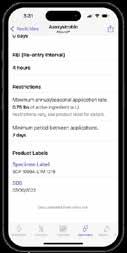

The UF/IFAS Blueberry Growers Guide app also contains modules with a scouting guide, a monthly management calendar, and detailed information on UF southern highbush blueberry cultivars, in both English and Spanish. It is available for download here. Current users of the app will see an in-app notification about the new version.

This module was a collaborative effort by UF faculty and staff, including Dr. Phil Harmon, Dr. Oscar Liburd, Dr. Peter Dittmar, Dr. Patricio Munoz, Dr. Norma Flor, and Doug Phillips.

20 | The Blueberry News FloridaBlueberryGrowers.org
NABC Update
For application rates and instructions, For application rates and instructions, please scan the QR Code. please scan the QR Code.






More Information,
visit For More Information, Please visit www.MagnaBon.com or call (800) 845-1357. www.MagnaBon.com or call (800) 845-1357.
For
Please
topic of the season
continued from page 18
TABLE 1. DISEASE MANAGEMENT OPTIONS, CONT.
No more than two sequential applications of Pristine® should be made before alternating with fungicides that have a different mode of action. Do not apply more than four applications of Pristine® per acre per crop year.
Do not make more than four applications or apply more than 8 oz of Indar® 75 WSP (0.38 lb active) per acre per year. Indar® 75 WSP belongs to the sterol demethylation inhibitor (DMI) class of fungicides. Alternation with fungicides of different classes is recommended.
12 h 7 days Do not make more than three applications per acre per crop year. Alternate with a fungicide with another mode of action.
24 h 30 days
Prothioconazole (Proline® 480 SC)
Tilt®, another DMI fungicide, may be applied by ground or aerial application (see label). Do not apply more than 30 fl oz per acre per season. Tilt® is more effective when it dries ahead of a rain.
5.7 fl oz ++++ 12 h 7 days Make up to 2 applications per year on a 7–10 day schedule.
Chlorothalonil (Bravo Weather Stik®) 3–4 pt ++++ 12 h (with restrictions) 6.5 days (w/o)
Cyprodinil + fludioxonil (Switch® 62.5WG)
Fluopyram + pyrimethanil (Luna Tranquility®)
Bacterial wilt Phosphorous acid soil application (K-Phite)
Dieback diseases (posthedging)
Phytophthora root rot
Captan mixed with a phosphorous acid product (Captan 50WP + Prophyt®
Fosetyl-Al (Aliette® WDG)
42 days Apply only as a postharvest fungicide for Septoria and rust. Do not combine with other pesticides, surfactants, or fertilizers.
11–14 oz +++ 12 h 0 days Applications can be made at 7-to-10-day intervals when conditions warrant. Do not apply more than 56 oz of product per acre per year. Make no more than two sequential applications before using another fungicide with a different mode of action.
16–27 fl oz ? 12 h 0 days Do not apply more than 54.7 fl oz per acre per year. Rotate to a different fungicide group after no more than 2 applications. Reapplication interval is 7 to 14 days. No efficacy data for this product are available for blueberry in Florida. Only Luna Tranquility is labeled for blueberry in Florida.

2-4 qt +++ 4 h 0 days
For bacterial wilt, the product must be soil-applied. Follow label instructions for chemigation or directed soil application with light irrigation. Reapplication interval is 3 to 28 days. Make applications postharvest through end of summer.
5 lb + 4 pt +++ 48 h 0 days
Apply immediately after postharvest hedging.
5 lb +++ 12 h 12 h
Apply Aliette® as a foliar spray for Phytophthora and Pythium root rots and Septoria leaf spot. Subsequent applications can be made at 14-to-21-day intervals. Two or three fungicide applications following harvest are generally sufficient to prevent major outbreaks of Septoria leaf spot. Assuming that hedging is conducted immediately following harvest, this is a good time to consider an application. Do not exceed four applications per acre per year.
Do not tank mix with copper and foliar fertilizers and do not apply in acidic water or add acidifying agents, because these practices could damage fruit or foliage. When tank-mixing this product with others, test the mix on a small area to make sure that phytotoxicity does not occur.
continued on page 24

22 | The Blueberry News FloridaBlueberryGrowers.org
Disease/ Pest Problem Management Options Amount of Formulation per Acre Effectiveness (Least = + to most = +++++) REI (restricted entry interval) PHI (postharvest interval) Comments Anthracnose, Septoria, target spot, and rust leaf diseases Pyraclostrobin + boscalid (Pristine®) 18.5–23 oz ++++ 12 h 0 days
Fenbuconazole (Indar® 2F) 2.0 oz +++
12 h 30 days
Metconazole (Quash®) 2.5 oz +++
(Tilt®) 6.0 fl oz +++
Propiconazole

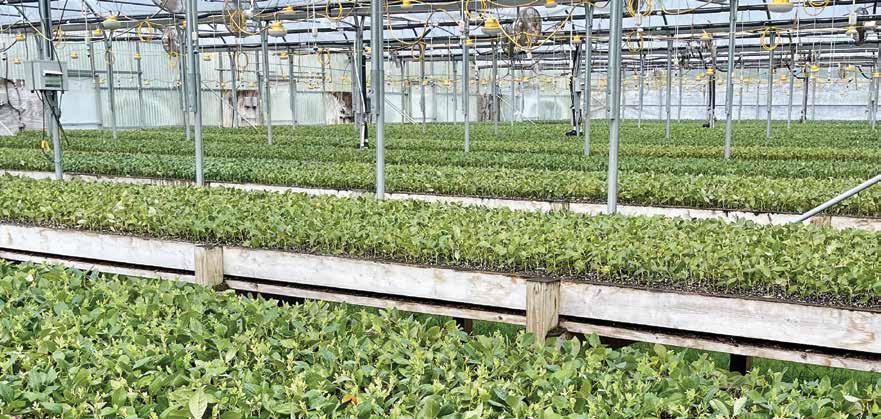






Call today to secure your order! 352 562-2583 Fergusonberries@gmail.com Silver Springs, FL New releases coming soon! Arcadia Avanti Sentinel Albus Kestrel Available Now High quality bare root transplants and liners, never root bound in containers. Strong healthy plants for quick establishment. Other varieties grown to order. If you want it, we’ll grow it!
topic of the season
continued from page 22
TABLE 1. DISEASE MANAGEMENT OPTIONS, CONT.
h 0 days Established plantings: Apply 1/4 pt/1000 linear feet of row (3.6 pt per acre broadcast basis) in a 3-foot band over the row. One application prior to bloom and one additional application postharvest, approximately 6 months later.
New plantings: Apply 3.6 pt per acre (broadcast rate) at or after planting. An 18-inch band over the row is recommended. Do not apply more than 0.9 gal per acre broadcast during the 12 months before plants bear harvestable fruit, or illegal residues may result. For both new and established plantings, one additional application may be made to coincide with periods most favorable for root rot development.
Apply as a foliar spray for Phytophthora and Pythium. Also effective against Septoria and anthracnose leaf spots. Do not tank mix with copper and foliar fertilizers and do not apply in acidic water or add acidifying agents, because these practices could damage fruit or foliage. When tank-mixing this product with others, test the mix on a small area to make sure that phytotoxicity does not occur.
Oxythiopiprolin
to 9.6 fl oz ? 4 h 1 day Apply as a soil drench, as a soil-directed spray, or through irrigation system in spring before plants begin to grow, with a follow-up application postharvest prior to the rainy season.
28 to 55 fl oz ? 48 h 1 day Apply as a soil drench, as a soil-directed spray, or through irrigation system in spring before plants begin to grow, with a follow-up application postharvest prior to the rainy season.
TABLE 2. INSECT AND MITE PEST MANAGEMENT OPTIONS
Fenazaquin (Magister® SC) 24–36 fl oz +++ 12 h 7 days Apply in at least 50 gallons of water per acre. Use higher rates for heavier mite pressure. Do not make more than one application per year.
Fenpyroximate (Portal®) 2 pt +++ 12 h 1 day Growers can make two applications per year.
Horticultural oil (JMS StyletOil®)
Horticultural oil (Stoller Golden Pest Spray Oil)
Spirotetramat (Movento®)
Blueberry gall midge

Spinetoram (Delegate® WG)
Acetamiprid (Assail® 30SG)
3–6 qt/100 gal ++ 4 h 0 days Blueberry bud mite cannot be readily seen, and by the time symptoms are observed in the spring, the mites are too deep for effective treatment. Avoid using this product if the temperature is above 85°F.

2 gal (low volume) application or 2 gal/100 gal (dilute spray)
++ 4h 0 days Avoid using this product if the temperature is above 85°F.
5–6 fl oz ++++ 12 h 7 days Do not apply more than 25 fl oz per acre per season.
3–6 oz +++ 4 h 3 days Do not apply more than 19.5 oz of Delegate or 0.3 lb a.i. spinetoram per acre per season. Delegate® WG is toxic to bees until 3 h after application when it is thoroughly dry.
4.5–5.3 oz +++ 12 h 1 day Do not apply within 4 days of bloom.
continued on page 26
24 | The Blueberry News FloridaBlueberryGrowers.org
Disease/ Pest Problem Management Options Amount of Formulation per Acre Effectiveness (Least = + to most = +++++) REI (restricted entry interval) PHI (postharvest interval) Comments Phytophthora root rot continued Mefenoxam (Ridomil Gold® SL) 3.6 pt ++++ 48
Potassium phosphite (Prophyt®) 4 pt ++++ 4 h
0 days
(Orondis® Gold 200) 4.8
Oxythiopiprolin, Mefenoxam (Orondis® Gold)
Blueberry bud mite








topic of the season
continued from page 24
TABLE 2. INSECT AND MITE PEST MANAGEMENT OPTIONS, CONT.
is toxic to bees until it is thoroughly dry (3 hours), but thereafter it is relatively nontoxic to bees. Entrust® should be applied in early morning or late evening during bloom.
Chilli thrips
is the material of choice for managing BBM. BBM sprays should protect berries from the start of oviposition until the last berries are harvested. Imidan® provides 10–14 days residual control. Do not apply more than twice per season.
lb +++ 12 h 7 days BBM sprays should protect berries from the start of oviposition until the last berries are harvested. Sevin® provides 5–7 days of residual effectiveness. Malathion (Malathion 57 EC)

pt +++ 12 h 1 day BBM sprays should protect berries from the start of oviposition until the last berries are harvested. Malathion provides 5–7 days of residual control.
++ 12 h 3 days Allow 14 days between applications.
Spirotetramat (Movento®) 8–10 fl oz/acre +++ 24 h 7 days Minimum interval of 7 days between applications.
Spinetoram (Delegate® WG)
6 oz +++ 4 h 3 days Delegate® WG may be applied as needed. Delegate® WG should be applied in the early morning. It is toxic to bees in the surrounding areas for the first 3 hours after application.
Acetamiprid (Assail® 30SG) 2.4 oz +++ 12 h 1 day Do not make more than four applications per season. Toxic to bees until spray is dry (approximately 3 hours).
Malathion (Malathion 57 EC)
Spinosad (Entrust®) (labeled for organic use)

2 pt ++ 12 h 1 day Malathion should be applied in the early morning or late evening to reduce the disruption of beneficial insects.
1.25–2 oz +++ 4 h 3 days It is toxic to bees in the surrounding areas for the first 3 hours after application.
continued on page 28
26 | The Blueberry News FloridaBlueberryGrowers.org
Disease/ Pest Problem Management Options Amount of Formulation per Acre Effectiveness (Least = + to most = +++++) REI (restricted entry interval) PHI (postharvest interval) Comments Blueberry gall midge, continued Cyantraniliprole (Exirel®) 13.5–20.5 fl oz +++ 12 h 3 days Do not
Spinosad (Entrust®) Labeled for organic use 1.25–2 oz +++ 4 h 3 days Entrust®
Malathion (Malathion 57 EC) 2 pt +++ 12 h 1 day Malathion
Diazinon (Diazinon AG 500) 1 pt +++ 5 days 7 days Do not
Tolfenpyrad (Apta®)
12
3
Blueberry maggot Phosmet (Imidan® 70W) 1.3 lb ++++ 24 h 3 days
Carbaryl
4F) 1.9–2.5
1.5
Diazinon
1 pt/100 gal
Spinetoram (Delegate® WG) 3–6 oz +++ 4 h 3
27
oz/acre
apply within 4 days of bloom. Minimum application interval between treatments is 5 days.
has low toxicity to bees and beneficial insects.
apply within 4 days of bloom.
27 fl oz/acre ++
h
days Allow 14 days between applications.
Imidan®
(Sevin®
(Diazinon AG500)
++++ 24 h 7 days Allow 14 days between applications.
days Do not apply more than 17.9 oz of Delegate or 0.28 lb a.i. spinetoram per acre per season. Tolfenpyrad (Apta®)
fl
Over 38,000 SOLD Worldwide!
Over 38,000 SOLD Worldwide!
one cold night can ruin an entire year’s hard work... It’s best to play it safe.
Since 1967, we have hand-crafted our wind machines with precision technology. We take pride in the details, which is why blueberry growers from around the world trust Orchard-Rite® wind machines to protect their mature stock and new plantings from the dangers of frost. We are dedicated to serving you and your crops by providing the tools, knowledge and service to stave off those frosty nights, protecting your harvest and your future.
Since 1967, we have hand-crafted our wind machines with precision technology. We take pride in the details, which is why blueberry growers from around the world trust Orchard-Rite® wind machines to protect their mature stock and new plantings from the dangers of frost. We are dedicated to serving you and your crops by providing the tools, knowledge and service to stave off those frosty nights, protecting your harvest and your future.

Adding ORCell™ allows you to remotely operate, monitor and manage your wind machines from anywhere in the world with internet connection. ORCell™ saves you time and reduces labor costs!
Adding ORCell™ allows you to remotely operate, monitor and manage your wind machines from anywhere in the world with internet connection. ORCell™ saves you time and reduces labor costs!
Superior Wind Machine Sales & Service
Superior Wind Machine Sales & Service
Authorized Distributor of Orchard-Rite® Wind Machines
Authorized Distributor of Orchard-Rite® Wind Machines
616-971-8177 orchard-rite.com
616-971-8177

orchard-rite.com

FloridaBlueberryGrowers.org The Blueberry News
27
|
When
When one cold night can ruin an entire year’s hard work... It’s best to play it safe.
topic of the season
continued from page 26
TABLE 2. INSECT AND MITE PEST MANAGEMENT OPTIONS, CONT.
Flupyradifurone (Sivanto® 200 SL)
Tolfenpyrad (Apta®)
2–4
oz/acre
12
Novaluron (Rimon® 0.83EC) 20–30 fl oz/acre ++ 12 h 8 days
10–16
Fenpropathrin (Danitol® 2.4 EC)
8–10
Thiamethoxam (Actara®) 3–4 oz +++ 12 h 3 days Foliar spray for control of adults. Actara® and Platinum® are neonicotinoids and should not follow each other in a rotation program.
Thiamethoxam (Platinum®)
5–12 fl oz +++ 12 h 75 days
Bifenthrin (Brigade® 2 EC) 10–16 oz ++++ 12 h Do not as a soil drench during harvest.
For larval control by directly drenching the soil area beneath the plant canopy or by applying through drip or microjet irrigation systems. Actara® and Platinum® are neonicotinoids and should not follow each other in a rotation program.
For larval control by directly drenching the soil area beneath the plant canopy or by applying through drip or microjet irrigation systems. Do not use as a soil drench during harvest.
Fenpropathrin (Danitol® 2.4 EC) 10–16 oz +++ 24 h 3 days For larval control by directly drenching the soil area beneath the plant canopy or by applying through drip or microjet irrigation systems.
Imidacloprid (Admire® Pro) 2.1–2.8 oz +++ 12 h 3 days Should not follow rotation with Platinum®. They are both neonicotinoids.
Flatheaded borer Thiamethoxam (Platinum®)
Flea beetles
5–12 fl oz +++ 12 h 75 days For larval control by directly drenching the soil area beneath the plant canopy or by applying through drip or microjet irrigation systems.
Carbaryl (Sevin® 4F) 1–2 lb +++ 12 h 7 days Sevin® is also effective against small to medium-sized caterpillars.

Diazinon (Diazinon AG500) 1 pt/100 gal ++++ 5 days 7 days Diazinon is also effective against small to medium-sized caterpillars.

Zetacypermethrin (Mustang Max™)
4 oz ++++ 12 h 24 h Use a minimum spray volume of 20 gal by ground. Acetamiprid (Assail® 30SG)
2.4
++++
continued on page 30
28 | The Blueberry News FloridaBlueberryGrowers.org
Disease/ Pest Problem Management Options Amount of Formulation per Acre Effectiveness (Least = + to most = +++++) REI (restricted entry interval) PHI (postharvest interval) Comments
Chilli Thrips, continued 27.0
fl oz/acre +++ 4 h 3 days You should allow a minimum of 7 days between applications.
fl
++++
h 3 days Apply by ground only. Maximum of 3 applications per season or 81 fl oz/acre/season.
Diaprepes (Citrus root weevil)
Bifenthrin (Brigade® 2 EC)
oz/acre +++ 12 h 1 day Foliar spray for control of adults.
fl oz/acre +++ 24 h 3 days Foliar spray for control of adults.
oz +++ 12 h 1 day Do not make more than four applications per season. Imported fire ants Diazinon (Diazinon AG500) 1 pt/100 gal
24 h 7 days Mound drench. Slowly apply 1 gal of diluted mixture over and 6 inches around each mound. Apply gently to avoid disturbing ants.
Stakes & Wraps
I recently took over the stakes and wrap sales for H&A Packing. As you make plans for 2023 season on your planting options, please feel free to contact me if you need to purchase any.
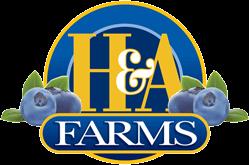
Pine Bark


For those of you who might not be familiar with what we are o ering, we have been using these at our farms for the last three years with great results. The cost for the set of stake/wrap is $0.72 cents. Although it is more than what you might spend with OJ cartons, you will not have to purchase new ones each year. The wraps we sell are plastic and the stake is made from fiberglass. Here are the benefits:
• They help blueberry plants stay upright
• They protect the blueberry stem from herbicide application, which in turn will help with fewer dead plants. This is because the herbicide will not create an open wound that would be a gate way to pathogens that will infect the plant with diseases.

• They will minimize plant loss from heavy storms and strong winds that might knock them over
• When we do freeze protection and ice builds on the blueberry plant the stake and wrap will minimize potential plant loss, by keeping them up right


• We are seeing more branches developing on our blueberry plant, which in turn will create more blueberry production per plant
• During machine harvest it helps protect your blueberry plants from the batting around that happens with the harvest machine
If you are interested in using them for the 2023, please let me know by the end of this month on how many you will need. This way I can get them pre-ordered for you and have them available for your farm after the domestic season.
As always you can call, text, or email me with any questions.
The Blueberry News | 29 Call Diego X. Vargas at 407-625-6436 or email diego.vargas@handafarms.com
For Blueberry Growers only
topic of the season

continued from page 28
TABLE 2. INSECT AND MITE PEST MANAGEMENT OPTIONS, CONT.
Esteem® Ant Bait should be applied during the spring and, if needed, again in the fall. Apply on sunny days when the soil temperature is at least 60°F and the soil is moist. Baits are slow acting but effective. Allow 4 weeks to work. Do not make other imported fire ant treatments for 7–10 days. May need to reapply if heavy, flooding rains occur within 7 days.
Extinguish® Professional Fire Ant Bait (0.5% methoprene) is legal for use on crop land. Caution: Extinguish baits with methoprene plus hydramethylnon are not labeled for use on crop land. Application during the heat of the day or when rain is expected within 6 hours of application will reduce the effectiveness of this product. In areas of heavy infestation, repeat applications may be necessary 10–12 weeks after the initial application.

30 | The Blueberry News FloridaBlueberryGrowers.org
Disease/ Pest Problem Management Options Amount of Formulation per Acre Effectiveness (Least = + to most = +++++) REI (restricted entry interval) PHI (postharvest interval) Comments Imported fire ants, continued Pyriproxyfen (Esteem® 0.86 EC Ant Bait) 1.5–2.0 lb (2–4 tbsp/mound) ++++ 12 h 24 h
Methoprene (Extinguish® Professional Fire Ant Bait 0.5%) 1–1.5 lb (3–5 tbsp/1000 sq ft) (3–5 tbsp/ mound) +++ 4 h 0 days
Scale Diazinon (Diazinon AG500) 1 pt/100 gal +++ 5 days 5 days Pyriproxyfen (Esteem® 0.86 EC) 1.5–2.0 lb +++ 12 h 24 h Mineral oil (JMS Stylet oil) 25–150 gal ++ 4 h 12 h Recommended 1–3 gallons per 100 gallons of water. Avoid using this product if the temperature is above 85°F. Imidacloprid (Admire® Pro) 10 fl oz +++ 12 h 3 days Foliar application. Spider mites Fenazaquin (Magister® SC) 24–36 fl oz ++++ 12 h 7 days Apply
year. Fenpyroximate (Portal®) 2 pt ++++ 12 h 1 day Growers can
applications per year. Acequinocyl (Kanemite® 15 SC) 31 fl oz +++ 12 h 1 day Do not
of
applications. Horticultural oil (JMS Stylet-Oil®) 3–6 qt/100 gal ++ 4 h 0 days Avoid using this product if the temperature is above 85°F. Horticultural oil (Stoller Golden Pest Spray Oil) 2 gal (low volume) application or 2 gal/100 gal (dilute spray) ++ 4 h 0 days Avoid using this product if the temperature is above 85°F.
wing drosophila Zetacypermethrin (Mustang Max™) 4 oz ++++ 12 h 24 h Use a minimum spray volume of 20 gal by ground. Spinetoram (Delegate® WG) 6 oz +++ 4 h 3 days Delegate® WG is toxic to bees until it is thoroughly dry.
in at least 50 gallons of water per acre. Use higher rates for heavier mite pressure. Do not make more than one application per
make two
apply this product through the irrigation system. Allow a minimum
21 days between
Spotted
continued on page 32
Pruning With a Purpose
Done Right, It Can Maintain Plant Vigor, Balance Growth, and Reduce Pests and Diseases




Pruning is an essential cultural practice for southern highbush blueberry (SHB) production in Florida. Proper pruning can result in many benefits, including maintaining suitable plant vigor, balancing vegetative and reproductive growth, controlling plant size, improving plant shape and structure, facilitating practices such as spraying and harvesting, and reducing incidence of pests and diseases.
Pruning may be done at different times of the year depending on the overall goals and objectives. For mature, bearing plants, postharvest hedging and topping is a major type of
pruning that is done soon after the end of harvest, thereby allowing time for regrowth before fall. The overall goals of postharvest hedging and topping are to keep plants at a manageable size and stimulate a strong, healthy, summer flush that will produce most of the fruit-bearing wood for the next year’s crop.
As stated above, maintaining plant vigor and balancing vegetative and reproductive growth are important overall pruning goals that can be partially addressed through postharvest hedging and topping. As the name implies, hedging and topping cuts are mostly non-selective and largely mech-






anized. Large-acreage growers often use over-the-row pruning machines (Figure 1, see page 34) and flail hedgers for riser rows (Figure 2, see page 34). Smaller acreage growers may use hand-held gas-powered trimmers. A common pruning height is between 40 and 48 inches although the height may vary with plant age, cultivar, plant health, and last year’s pruning height. Many growers prune straight across the top giving a “flat top” appearance, although some growers prefer a “rooftop” cut angled 45 – 55 degrees up to a point in the center of the plant.
Most SHB cultivars respond well to











continued on page 34

FloridaBlueberryGrowers.org The Blueberry News | 31 Is your far m FSMA ready? www.FDACS.gov/FSMA Sign up today for a free On-Far m Readiness Review This publication is supported by the Food and Drug Administration (FDA) of the U.S. Department of Health and Human Services (HHS) as part of a financial assistance award U2FFD007446 totaling $1,166,732 with 100 percent funded by FDA/HHS. The contents are those of the author(s) and do not necessarily represent the official views of, nor an endorsement, by FDA/HHS, or the U.S. Gover nment.
field management
topic of the season
continued from page 30
TABLE 2. INSECT AND MITE PEST MANAGEMENT OPTIONS, CONT.
for the crop , continued from page 15
These products are systemic and, in contrast to mefenoxam, are recommended as summer foliar sprays to help combat PRR and fungal leaf diseases.
A new fungicide within the FRAC group 49 is available for use on blueberry. Oxathiapiprolin is available in the product Orondis® Gold 200, or as premix with mefenoxam in the product Orondis® Gold (Premix). These products have not been evaluated on SHB in Florida; thus look for additional information on these products as data become available. Additional specific information on fungicide products, use rates, reapplication intervals, pre-harvest intervals, and reentry intervals are detailed in the 2022 Florida Blueberry Integrated Pest


Management Guide (https://edis.ifas. ufl.edu/hs380).


In organic production systems where many conventional fungicides cannot be utilized (there is no organic source of phosphorous acid) the cultural practices mentioned above should be implemented to reduce the likelihood of Phytophthora infection and root rot losses. Sanitation measures including proper cleaning of reusable pots, avoiding the re-use of planting substrates, and preventing contact of nursery stock with soil and surface water are also suggested. Efficacy data for mulches, composts, and biological control products are limited.
Summary
PRR is the most common soilborne disease affecting SHB bushes in
Florida. Unchecked development can lead to stunting, early fall discoloration, plant dieback, and plant death; however, good cultural and chemical management options exist that can significantly reduce the impact of this important disease when applied preventatively. Submit suspect samples to the UF IFAS Plant Diagnostic Center (https://plantpath.ifas.ufl.edu/ extension/plant-diagnostic-center/) for early diagnostic confirmation and consult Extension resources for the most up-to-date management options.
32 | The Blueberry News FloridaBlueberryGrowers.org
Disease/ Pest Problem Management Options Amount of Formulation per Acre Effectiveness (Least = + to most = +++++) REI (restricted entry interval) PHI (postharvest interval) Comments Spotted wing drosophila, continued Malathion (Malathion 57 EC) 1.5 pt ++++ 12 h 1 day Cyantraniliprole (Exirel®) 13.5–20.5 oz +++ 12 h 3 days Minimum application interval between treatments is 5 days. Fenpropathrin (Danitol® 2.4 EC) 10.6–16 oz ++++ 24 h 3 days Do not make more than two consecutive applications. Rotate with insecticides from different classes. Bifenthrin (Brigade® 2 EC) 5.3–16 oz ++++ 12 h 1 day Do not make more than two consecutive applications. Phosmet (Imidan® 70-W) 1.3 lb ++++ 1 day 3 days Spinosad (Entrust®) (labeled for organic use) 1.25–2 oz +++ 4 h 3 days Label for organic use. Allow pesticide to dry before bees can forage. Acetamiprid (Assail® 30 SG) 4.5–5.3 oz +++ 12 h 1 day Do not apply when a lot of bees are foraging. Tolfenpyrad (Apta®) 27 fl oz/acre ++ 12 h 3 days Allow 14 days between applications. _________ CREDIT DR. PHIL HARMON, professor, Plant Pathology, UF/IFAS & DOUG PHILLIPS, Blueberry Extension Coordinator, UF/IFAS
To place a classified ad please e-mail info@centralfloridamediagroup.com or call (863) 248-7537.
MY PAYROLL SOLUTIONS LLC has over 18 years of experience in matching small businesses, Agriculture Companies and harvesters to staffing services and employee leasing companies which provide payroll services with workers comp coverage for our clients and providing assistance with H2A applications. For more information contact Jeff H Futch at 863 835-1130

EQUIPMENT FOR RENT
FOR RENT
7 yard rowmulcher, Great for replenishing bark on Blueberry Farms, PTO drive, 30hp tractor needed. Call 863-604-2526 for rental
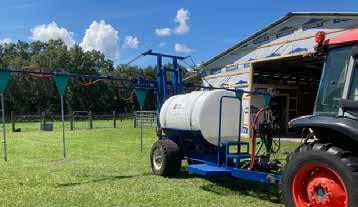

PRODUCTS & SERVICES
AGRI-SOURCE
Producer of Blueberry Pine Bark Products for the Blueberry Industry.
352-351-2700
AIRTEC SPRAYERS
Over the Row Blueberry Sprayers
Lower Volumes, Less Drift, Better Coverage. 863-412-6247 AirtecSprayers.com
CARDEN & ASSOCIATES, INC.

863-291-3505
Here for the Florida Blueberry Grower…yesterday, today and tomorrow!
EVERGLADES EQUIPMENT
12 locations in Florida with the Best Lease Program in the Business!
A John Deere Dealer ShopEFE.com
FARM CREDIT OF CENTRAL FL
866-824-5626 Patronage refunds for Smart Farmers and Country Home Owners. Lower costs!
FERGUSON FARMS
Strong healthy plants for quick establishment.

352-562-2583
FIELDS EQUIPMENT CO.,
a John Deere Authorized Dealer. 3 Locations. Small Dimensions, Big Performance. (863) 967-0602 FieldsEquip.com
FLORIDA FOUNDATION SEED PRODUCERS, INC.
352-392-9446
Providing Superior Plant Varieties
IS YOUR FARM FSMA READY?

Sign up today for a free on-farm readiness review. www.FDACS.gov/FSMA
ISLAND GROVE
352-274-3835
Quality Plants. Superior Service. IslandGroveAgProducts.com
ORCHARD-RITE
performance wind machines are pure and powerful (509 834-2029 / Orchard-Rite.com
PALOGIX INTERNATIONAL
Plastic rentals, logistic & management solutions. Palogix.com

PERFORMANCE NUTRITION
Empower your soil with soil innoculants and protect against stress (732) 888-8000 pnfertilizers.com
PINE BARK FOR SALE
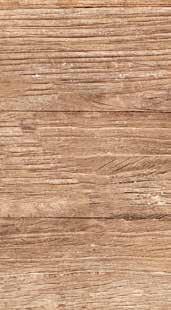
Blueberry Growers Only, H&A Farms, Call Diego Vargas at 407-625-6436 or email Diego. Vargas@HandAFarms.com
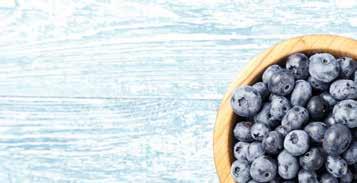




PLANT FOOD SYSTEMS
Advanced Plant Nutrition and Protection. PlantFoodSystems.com
Red Blueberry Lugs for sale. Approximately 2500. $1.50 Each For Orders & More Information, Contact Terri Martinez at (352) 409-5009 or email to terri@wildgoosefarms.net
FloridaBlueberryGrowers.org The Blueberry News | 33
RETIREMENT EQUIPMENT SALE • Boom Sprayer BLUEBERRY LUGS Blueberry Starter Plants OPTIMUS COMING SOON ARCADIA PINK LEMONADE Taking orders for WE SERVICE NURSERIES AND GROWERS WITH 102 COUNT LINER TRAYS AND LARGER STARTER PLANTS Liner pricing starts at $0.67 each. *plus royalty Mike Kemp Head of Sales agromillora.com | Sales: 863-978-8646 | mkemp@agromillora.com POWDER BLUE BUILD YOUR OWN CLASSIFIED AD @ centralfloridamediagroup. com/placead Blueberry Farm Liquidation Sale • Harvest wagons • Sprayers • Harvest lugs
Mobile farmware computer harvest equipment • Irrigation parts and surface water pump and engine • And more 352-586-1199
•
field management , continued from page 31
hedging and topping, however there are exceptions such as Chickadee, where light tipping instead of the usual pruning has been beneficial in some cases. Some cultivars that are very vigorous growers may also need a light tipping a few weeks after postharvest hedging to reduce plant height and promote branching to help increase yield. This tipping should not take place too late in summer, as it could impact floral bud differentiation or delay the crop’s maturity at the top of the bush.
A major goal of postharvest hedging and topping is to stimulate a strong summer growth flush (Figure 4). However, fertilization, irrigation, and pest and disease management are also important to develop and maintain healthy foliage during the critical flower bud initiation period from late summer through fall. Research has shown the importance of healthy foliage being present during late summer and fall for strong flower bud initiation and development. Early defoliation from disease or other factors can reduce the number of flower buds formed on summer flush wood and reduce the number of florets per flower bud.
Hedging can help reduce disease and pest pressure by removing disease inoculum (e.g., rust and Septoria) or insect pests (e.g., wax scale and blueberry bud mite) from the field. It will also open up the plant canopy to allow for better airflow (promoting faster foliage drying and therefore less fungal disease) and better coverage when spraying fungicides and insecticides. Because hedging can create an entry point for disease pathogens such as Botryosphaeria (stem blight), it is important to spray a broad spectrum fungicide, such as captan, immediately after hedging to minimize the opportunity for plant infection (Figure 3).
When plants are several years old, some of the oldest canes may begin to lose their productivity and should be removed. This type of pruning is called cane renewal pruning and usually begins when plants are 4 to 5 years old. Typically, one or two of the oldest
canes are removed by cutting close to the crown. This opens the crown to sunlight and stimulates the production of new canes so that a given plant will have canes of varying age and vigor. Selective hand pruning can also be done at this time by removing small diameter “twiggy” wood in favor of larger diameter wood that will produce more vigorous growth and higher quality fruit. Cane renewal and selective hand pruning are usually done during winter when the plant structure is easy to see. Since pruning may increase cold sensitivity, winter pruning is usually done late in the winter after the coldest weather has passed but should not be done in the fall or early winter prior to the onset of cold weather.
If blueberry plants have not been pruned for several years and are unproductive, it may be possible to rejuvenate the plants through aggressive pruning, depending on the cultivar and overall plant health. With this method, all of the plant's canes are hedged back to 1–2 feet, either in early summer or during winter when deciduous plants are dormant. This will significantly reduce the yield on these plants for the next one or two seasons, and response to this type of pruning may differ by cultivar. If growers face this situation and are evaluating this type of pruning, they should consider using it on only a portion of their field in a given year to maintain some level of production during this process, and to determine the success of this practice on a particular cultivar.




At planting, SHB plants are usually pruned to minimize transplant stress
continued on page 37
34 | The Blueberry News FloridaBlueberryGrowers.org
Figure 1. Bennetts BTS chopper over-therows mechanical hedger/topper. Photo credit: J.G. Williamson.
Figure 2. An adjustable flail hedger may be used to prune riser rows. Photo credit: J.G. Williamson.
Figure 3. A broad-spectrum fungicide is applied to plants immediately after hedging and topping to reduce fungal infections to open pruning wounds.
Photo credit: J.G. Williamson.
Figure 4. Post-hedging growth flush. Photo Credit: D. Phillips
______ CREDIT
by DOUG PHILLIPS, UF/IFAS Blueberry Extension Coordinator
Spring and Early Summer Blueberry Management Items
The table below lists suggested blueberry management items for spring and early summer. Suggested management items for the entire calendar year are available in an EDIS publication, Calendar for Southern Highbush Blueberry Management in Florida (https://edis.ifas.ufl.edu/publication/HS1363). Specific disease, insect, and weed controls are listed in the 2022 Florida Blueberry IPM Guide (https://edis.ifas.ufl.edu/publication/ HS380), as well as in subject-specific publications referenced below. Also, a list of all UF EDIS blueberry publications can be found at www.blueberrybreeding.com/blog, along with a summary description and link to each.
Remember to take a look at the UF/IFAS Blueberry Growers Guide phone app (available in both English and Spanish) for field scouting tools, information on all of the UF southern highbush blueberry cultivars, and a new quick reference guide for pesticides (available for download at https://tosto.re/blueberryuf).




APRIL
Disease Apply suggested fungicides in rotation for control of anthracnose and/or Alternaria fruit rot; promptly harvest and cool ripe fruit. One tool growers may consider in timing spray applications is the Blueberry Advisory System (BAS) at www.agroclimate.org/BAS, which indicates when weather conditions are favorable for the development of anthracnose fruit rot.
Insect Pests Monitor for gall midge and flower thrips and control as needed. Spray suggested insecticides to control spotted wing drosophila (SWD), and promptly harvest ripe fruit. If living north of Lake City and there is a history of blueberry maggot, establish yellow sticky traps to monitor for blueberry maggot adults. Also, in infested areas, start scouting for adult Diaprepes (citrus) root weevils, and adult flatheaded borers on the blueberry foliage. No pesticide is labeled in blueberry for citrus root weevil and flatheaded borer; however, some of the cover sprays for spotted wing drosophila will control these pests. See UF EDIS Publication ENY999, Diaprepes Root Weevil on Southern Highbush Blueberry in Florida (https:// edis.ifas.ufl.edu/publication/IN1241).
Post-harvest, spray to control blueberry bud mite if present or observed in prior season.
Weeds Apply post-emergence herbicide if weeds are at densities that hinder bush growth.
MAY
Disease Monitor for post-harvest leaf diseases (rust, anthracnose, Septoria, target spot, Phyllosticta) and apply suggested control measures. See UF EDIS Publication PP348, Florida Blueberry Leaf Disease Guide (https://edis.ifas.ufl.edu/ publication/PP348).
Insect Pests Continue with insecticide sprays for spotted wing drosophila for the remaining ripe fruit that is left on the bush. Continue monitoring for blueberry maggot in affected areas. Continue monitoring for adult citrus root weevils and adult flatheaded borers in infested areas. See UF EDIS Publication ENY999, Diaprepes Root Weevil on Southern Highbush Blueberry in Florida (https://edis.ifas.ufl.edu/publication/IN1241).
continued on page 36
MEMBERSHIP INFORMATION
To join or renew your membership in the Florida Blueberry Growers Association, mail a check payable to:
FLORIDA BLUEBERRY GROWERS ASSOCIATION, INC. P.O. Box 358086

Gainesville, FL 32635
•Grower Member: $150 (Florida & out-of-state growers)
Additional Associate Member/Grower: $50 each
•Allied Member: $200 (equipment and chemical companies, etc.)

Additional Associate Member/Allied: $50 each
•Educational & Research Member: $10 (University and USDA members who do not grow blueberries commercially)




FloridaBlueberryGrowers.org The Blueberry News | 35
Contact Jack Green, Blue Labor, LLC. JGreen014@me.com 863-660-9588
Mulch sales
Container sales
Farm consulting
•
•
•
Insect Pests, cont.










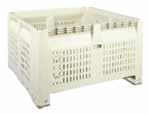


continued from page 35
MAY, continued
Post-harvest, spray to control blueberry bud mite if present or observed in prior season. Scout for chilli thrips (leaf curling and bronzing) and blueberry flea (leaf) beetle (shot holes in the leaf) and apply suggested control measures if present. See UF EDIS Publication EENY2053, Chilli thrips on Blueberries in Florida (https://edis.ifas.ufl.edu/publication/ IN1298).
Weeds Apply a pre-emergence herbicide after harvest (tank mix with a post-emergence herbicide if weeds are at densities that hinder bush growth).
Pruning After harvest is complete, hedge back bushes to stimulate new vegetative growth, immediately spraying with a suggested fungicide to minimize the risk of fungal pathogens infecting through pruning wounds. See UF EDIS Publication HS1359, Pruning Southern Highbush Blueberry in Florida (https://edis.ifas.ufl.edu/publication/HS1359).
JUNE
Disease Scout for algal stem blotch. See UF EDIS Publication PP344, Algal Stem Blotch in Southern Highbush Blueberry in Florida (https://edis.ifas.ufl.edu/ publication/PP344). Selectively prune out canes infected with algal stem blotch, Botryosphaeria stem blight, and dead canes. Monitor and manage leaf diseases. See UF EDIS Publication PP348, Florida Blueberry Leaf Disease Guide (https://edis.ifas.ufl.edu/publication/PP348). Apply Ridomil to help prevent Phytophthora root rot. On farms managing bacterial wilt, begin monthly through-irrigation or banded bed applications of a phosphorous acid product. See UF EDIS Publication PP332, Bacterial Wilt of Southern Highbush Blueberry Caused by Ralstonia solanacearum (https://edis.ifas.ufl.edu/ publication/PP332).

Insect Pests Scout for flea beetles, larval citrus root weevil (by pulling out dead or dying plants and examining the roots and surrounding soil/bark), larval flatheaded borer, chilli thrips, and southern red mites and apply suggested control measures if present. See UF EDIS Publications ENY999, Diaprepes Root Weevil on Southern Highbush Blueberry in Florida (https://edis.ifas.ufl.edu/ publication/IN1241), EENY2053, Chilli thrips on Blueberries in Florida (https://edis.ifas.ufl.edu/publication/IN1298), and ENY1006, Mite Pests of Southern Highbush Blueberry in Florida (https://edis.ifas. ufl.edu/publication/IN1284).
Leaf
Tissue Samples

Leaves should be collected for tissue nutrient analysis. Select samples from fully expanded leaves in the middle of a recent summer growth flush.
Weeds Apply post-emergence herbicide if weeds are at densities that hinder bush growth.

36 | The Blueberry News FloridaBlueberryGrowers.org
Plastic Rentals, Logistic & Management Solutions ■ Daily Bin Rental On-Demand — No Minimum Quantity or Timeframe ■ Citrus Bins, Blueberry Lugs, Peach Tote Rentals ■ Bin Repairs ■ Recycle Program Jerry Cummings 863-651-5596 jcummings@palogix.com www.palogix.com
field management , continued from page 34
and modify their growth and shape to facilitate later practices such as harvesting. Traditionally 1/3 to ½ of the top of the plant is removed at planting to reduce transplant stress and assist with plant establishment. The amount of pruning at planting will depend on the condition of the plant and the care received after planting. Tall, leggy nursery plants may require more top removal than smaller plants. Although it has been common in the past to remove flower buds from young plants in the first and sometimes the second year after planting to encourage foliage and canopy growth, some growers have been harvesting young blueberry plants within 12 to 18 months after planting (particularly in the evergreen system on vigorous cultivars), so removing buds is not recommended in every situation.
If machine harvesting is a consideration, young blueberry plants should be trained to a narrow crown. Cartons






or plastic sleeves may be used in young, recently planted, fields to encourage a narrow crown (Figure 5). However, continued pruning of the crown will be necessary to maintain narrow crowns as plants continue to grow and mature (Figure 6).

In summary, pruning may have dif ferent objectives and goals depending on the circumstances, ranging from re ducing stress during the planting and establishment period, stimulating vigor, controlling plant size, and facilitating important farming operations such as fruit harvesting and pest and disease management. Additional information on pruning southern highbush blueberry plants in Florida can be found at https://edis. ifas.ufl.edu/publication/ HS1359.


FloridaBlueberryGrowers.org The Blueberry News |
Agri-Starts, Inc. is a licensed propagator of Florida Foundation Seed Producers, University of Georgia Research Foundation, and University of Arkansas genetics. COME VISIT US ANYTIME! BLUEBERRIES BLACKBERRIES & MORE! AGRISTARTS.COM (407) 889-8055 - info@agristarts.com 1728 Kelly Park Rd. - Apopka, FL 32712 Agristarts Ad 7.5x5.indd 1 9/9/16 5:59 PM
Virus indexed plants from tissue culture available in 72ct. cell packs & field ready liners.
ing. Photo credit: J.G. Williamson.
Figure 6. ‘Farthing’ blueberry plants previously trained to narrow crowns with cartons. Continued pruning will be required to maintain narrow crowns as the plants mature. Photo credit: J.G. Williamson.
_________ CREDIT
JEFF WILLIAMSON & DOUG PHILLIPS, Blueberry Extension Coordinator, UF/IFAS
USHBC Update

How BerrySmart Are You?
USHBC’s BerrySmart Field initiative is a collaborative experience among growers, researchers and tech providers to optimize blueberry farming operations, focusing on soil, soil nutrients, yield distribution, weather, chemicals, and labor. As part of this initiative, we’re working in partnership with innov8.ag to validate a smart farm network that enables blueberry growers, packers and stakeholders in sales, tech and research to collaborate on farm operation optimization with better and more predictable yield outcomes.
We’re excited to share that BerrySmart Field is in year two, with an expanded site and new technology. There are currently three BerrySmart Fields — two in Washington and one in Oregon. This year, we'll build upon findings of pollination variability across blocks by doubling down with bee and pollination experts, including Beewise, BeeFlow and BeeHero. We'll also be exploring mechanical pollination with BloomX, and are excited to introduce automated mapping of blossom and yield variability with the Burro autonomous robot and the GreenAtlas mapping system.
Visit ushbc.org/BerrySmart to learn more. Plus, go to innov8.ag/berrysmart to sign up for newsletter updates. You can also let us know about any emerging technologies we should consider incorporating into BerrySmart Fields! Reach out to Amanda Griffin, USHBC vice president of engagement and education, at agriffin@blueberry.org to learn more and get involved in the BerrySmart initiative.
Register for The Blueberry Summit in Georgia This Fall
Mark your calendar to attend The Blueberry Summit, Sept. 27-29 in Savannah, Georgia!
Registration for the event is opening soon, and we’re making plans to bring you informative learning sessions, the latest on ag technology, an inspiring list of keynotes, and lots of opportunities to network with blueberry industry thought leaders and colleagues.
We’ll be gathering at The DeSoto in the heart of downtown Savannah, a hotel that has welcomed four presidents and dozens of personalities, including Gregory Peck and Katharine Hepburn. And it’s not just a hotel – it also has an art gallery feel because The DeSoto partners with the acclaimed Savannah College of Art & Design (SCAD) to showcase the work of SCAD graduates, emerging artists and fine art photographers. Believe us when we say you do not want to miss out on this event. The Blueberry Convention in February received rave reviews, and we’ve got even more planned for you this fall, so be sure to save the date!
Don’t Miss USHBC’s Weekly Crop Reports
Tune in to “The Business of Blueberries” podcast each week to listen to a blueberry crop report from Brittany Lee, vice president of Florida Blue Farms, and others.
It’s a turnkey way to get helpful data on the state of the crop! Plus, our weekly podcast includes a guest from the blueberry industry discussing a hot topic, innovation or insight into the industry. Listen every week wherever you get your podcasts!
Reclamation ecologists like Ashlee work to return mined lands to productive use as wildlife habitats, public parks and more—so future generations can enjoy these lands for years to come.

38 | The Blueberry News FloridaBlueberryGrowers.org
With every generation, we get better at protecting our environment.
Are You Licensed?
Blueberry varieties developed by the University of Florida are patent protected under U.S. Code Title 35. Anyone propagating plants for their own use or for sale is required to be licensed by Florida Foundation Seed Producers, Inc. (FFSP). Additionally, packers, marketers, and sellers of fruit from the above varieties can be liable for selling fruit from illegally propagated plants. As of Sept 30, 2022, the above entities are the only entities licensed for legal propagation and sale of plants of the respective varieties. Protect yourself from unknowingly purchasing illegal plants or fruit by asking entities if they are licensed to propagate and if fruit has come from legal plants. Illegal propagation is a direct threat to the blueberry industry and the patent rights held by FFSP. Royalties generated are critical to the support of the Florida blueberry breeding program. If you are interested in obtaining a license or would like to anonymously report illegal propagation, please contact: FFSP, 3760 NW 83rd St, Suite 2, Gainesville FL 32606, Phone: (850)-594-4721 ext. 108. You can also visit http://ffsp.net to learn more about licensing oppportunities.


FloridaBlueberryGrowers.org The Blueberry News | 39
x = Licensed for USA
x¹ = Licensed for USA (excluding AZ, CA, OR, and WA)
KPHITE® 7LP & Sizer XL work systemically throughout the plant, delivering vital disease protection and nutrients right where the plant needs it. KPHITE® 7LP brings its EPA registered disease protection from its unique, proven fungicide bactericide molecule Sizer® XL provides totally soluble Phosphate and Potassium to encourage consistent fruit set and superior production.
KPHITE® 7LP and Sizer® XL are trusted by growers and proven through independent trials
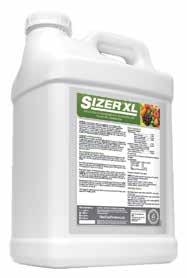



40 | The Blueberry News FloridaBlueberryGrowers.org THE SYSTEMIC COMBINATION FOR A S U P ERIOR B LUEBER R Y CR O P 800 -343 -77 75 • P.O. B OX 7 75 • ZEL LWOO D, FL 3 2798 • PlantFoodSystems com K-PHITE ® 7LP and Sizer® XL are registered trademarks of Plant Food Systems, Inc &























































































































































































